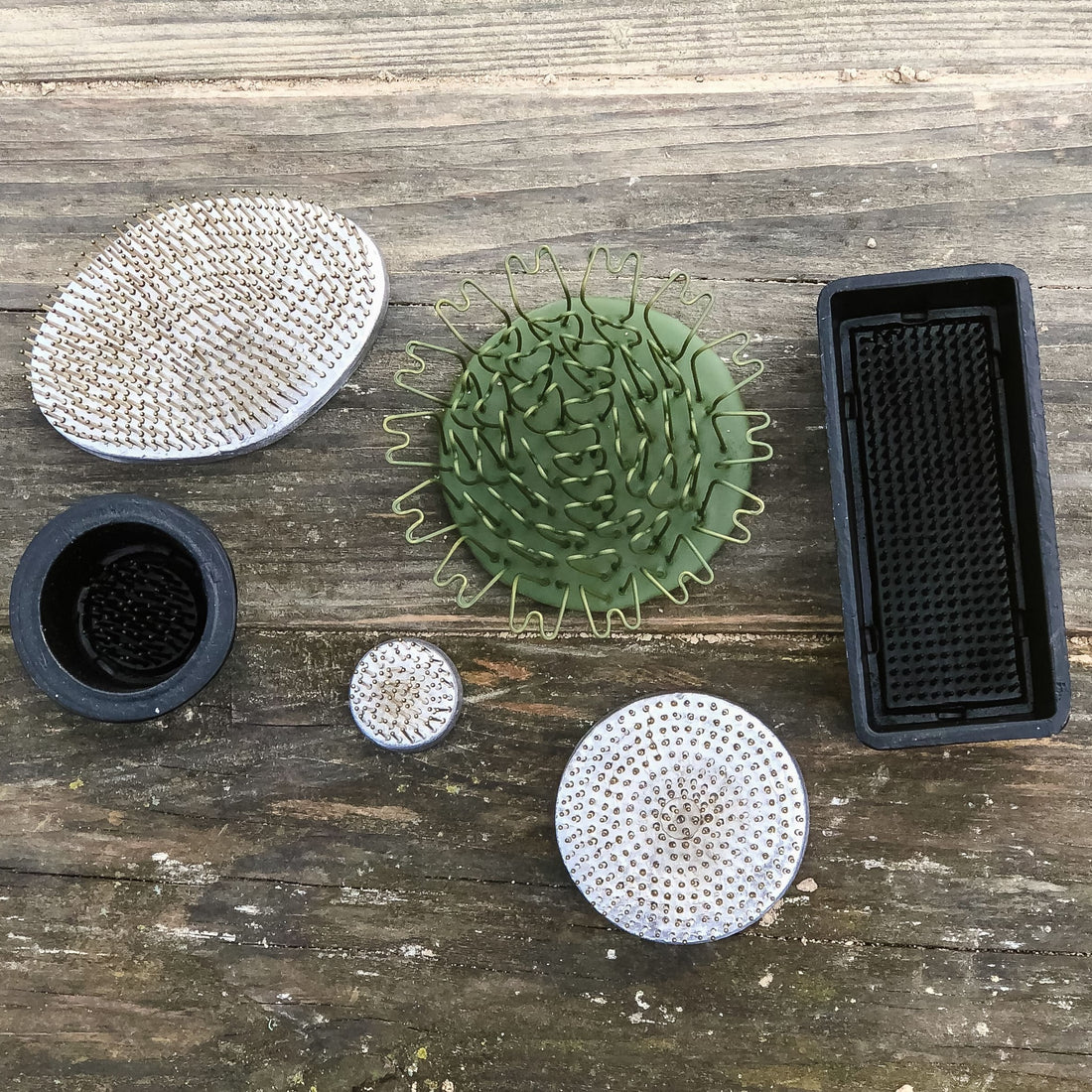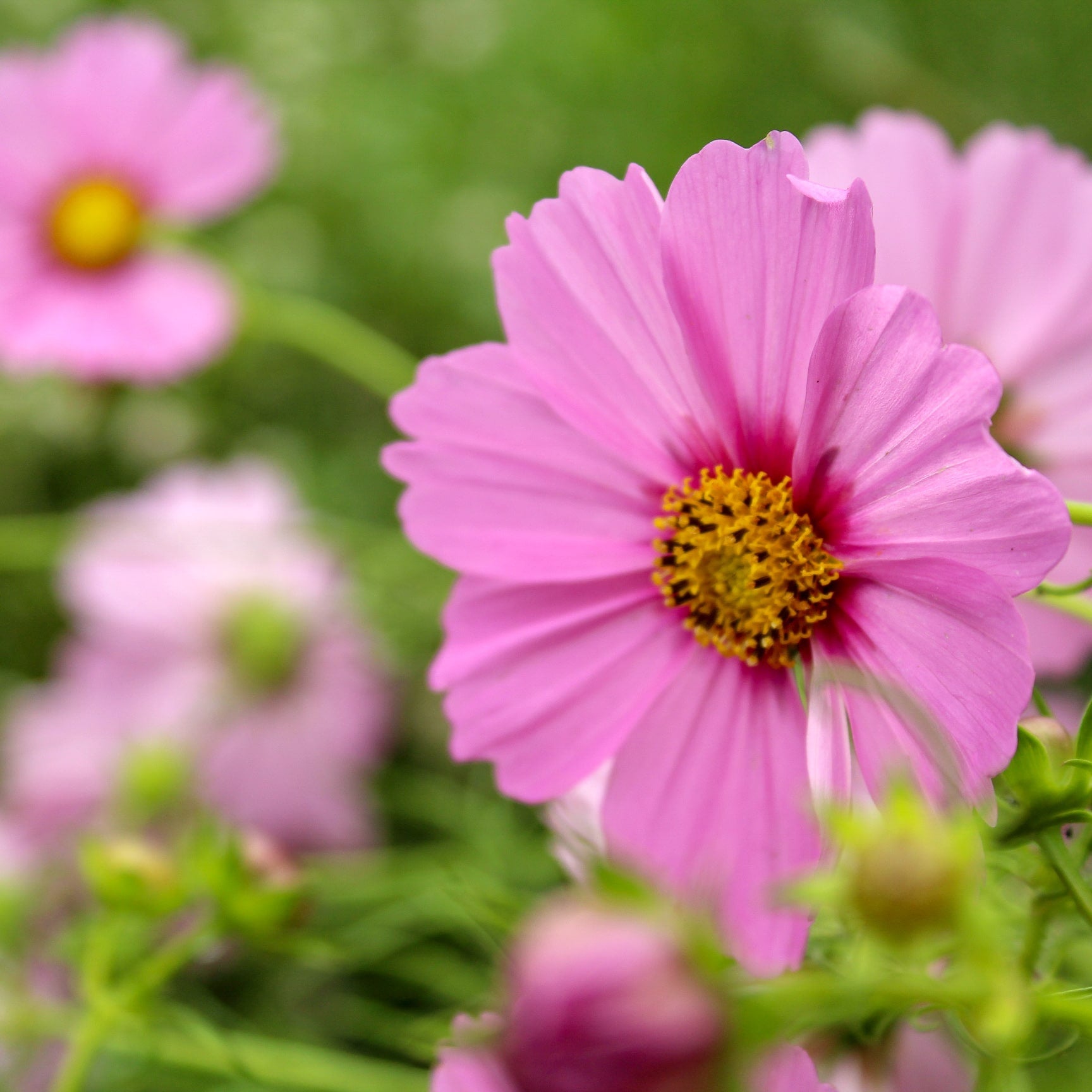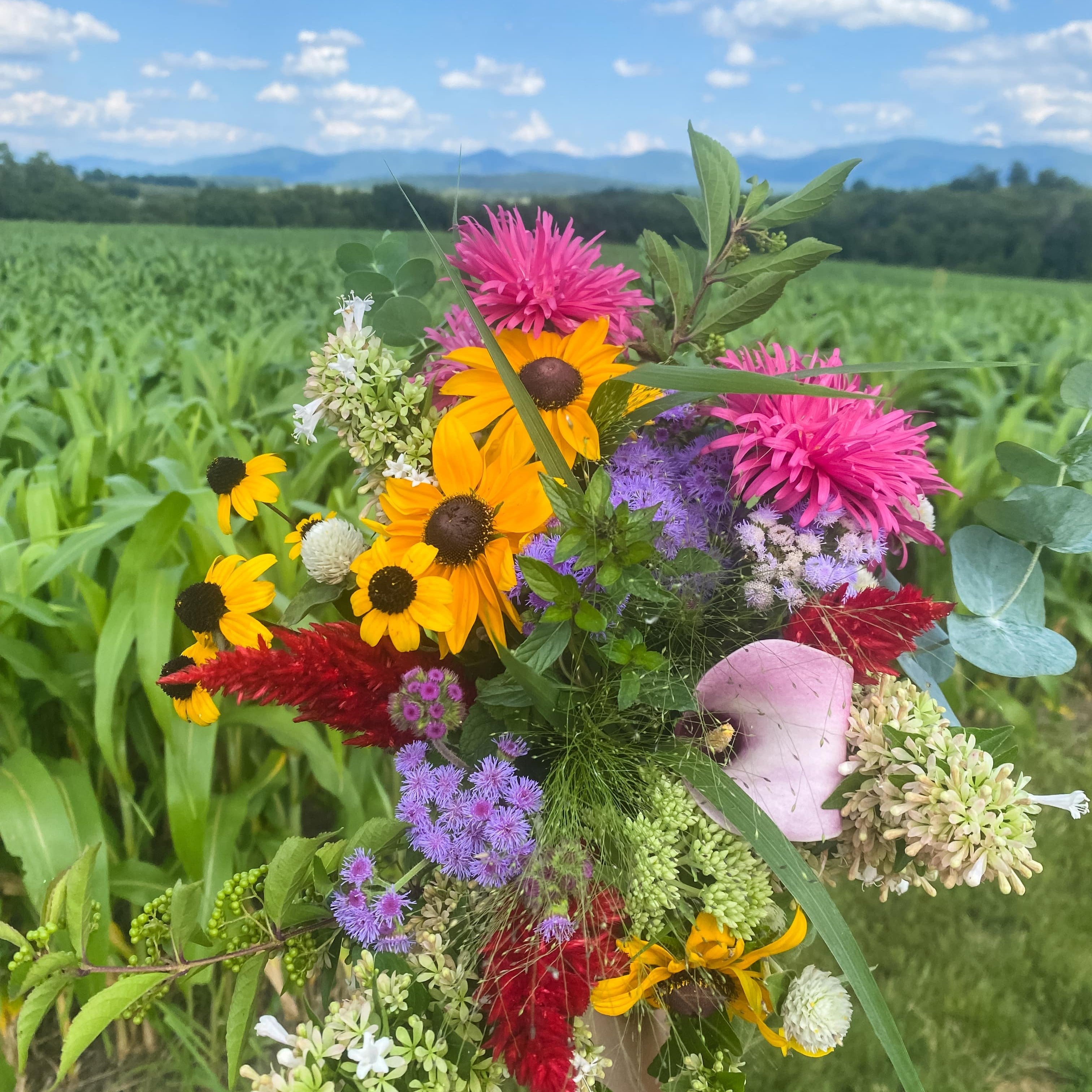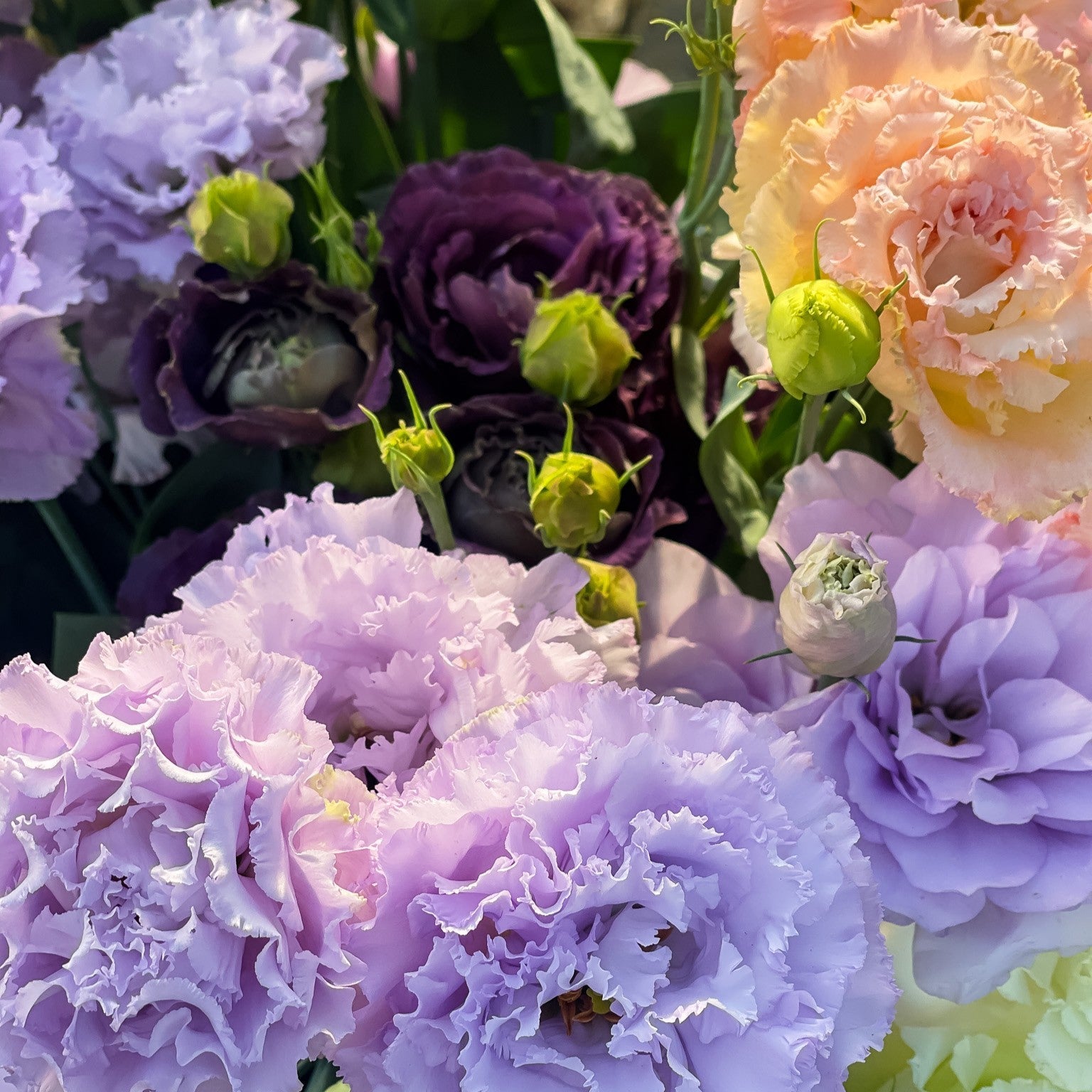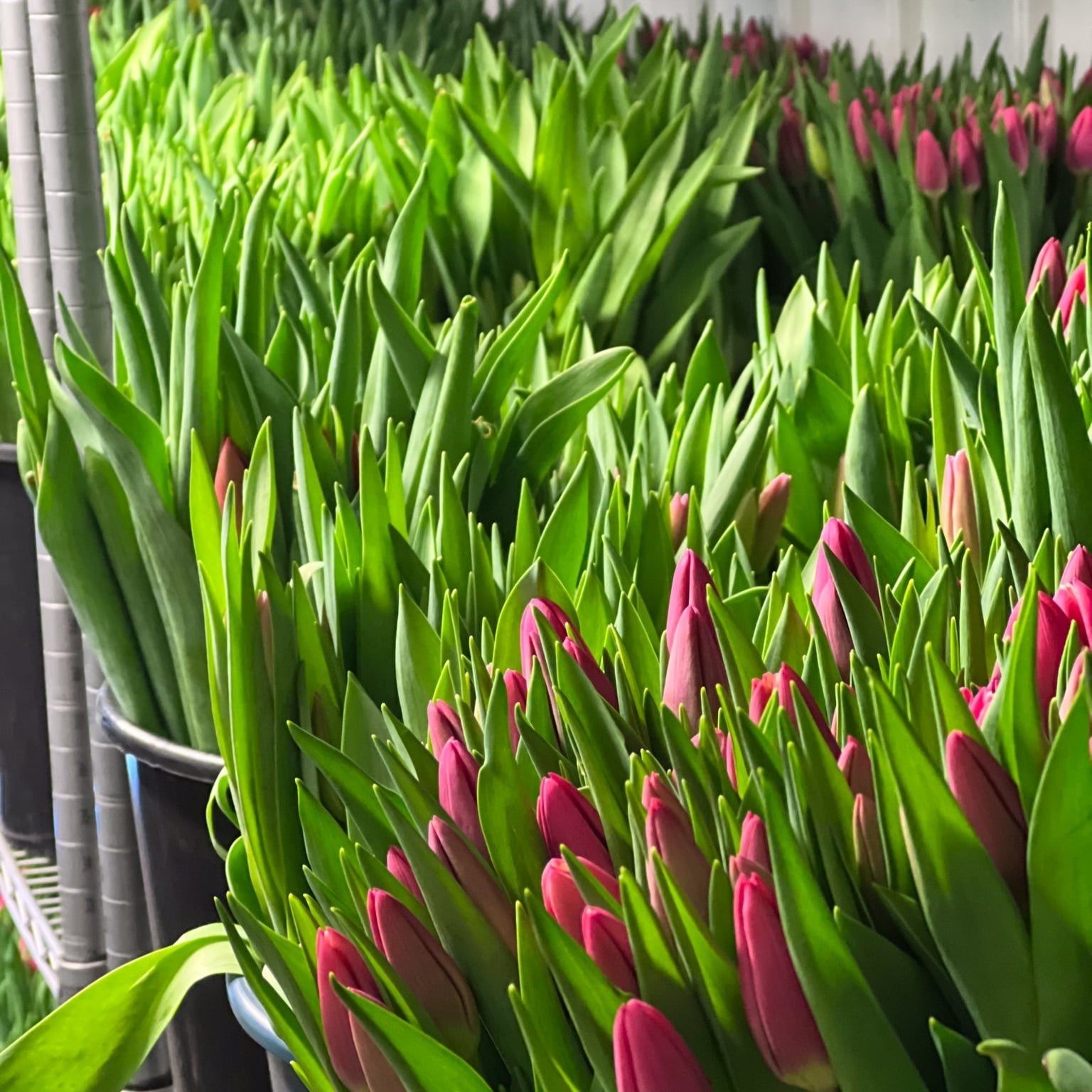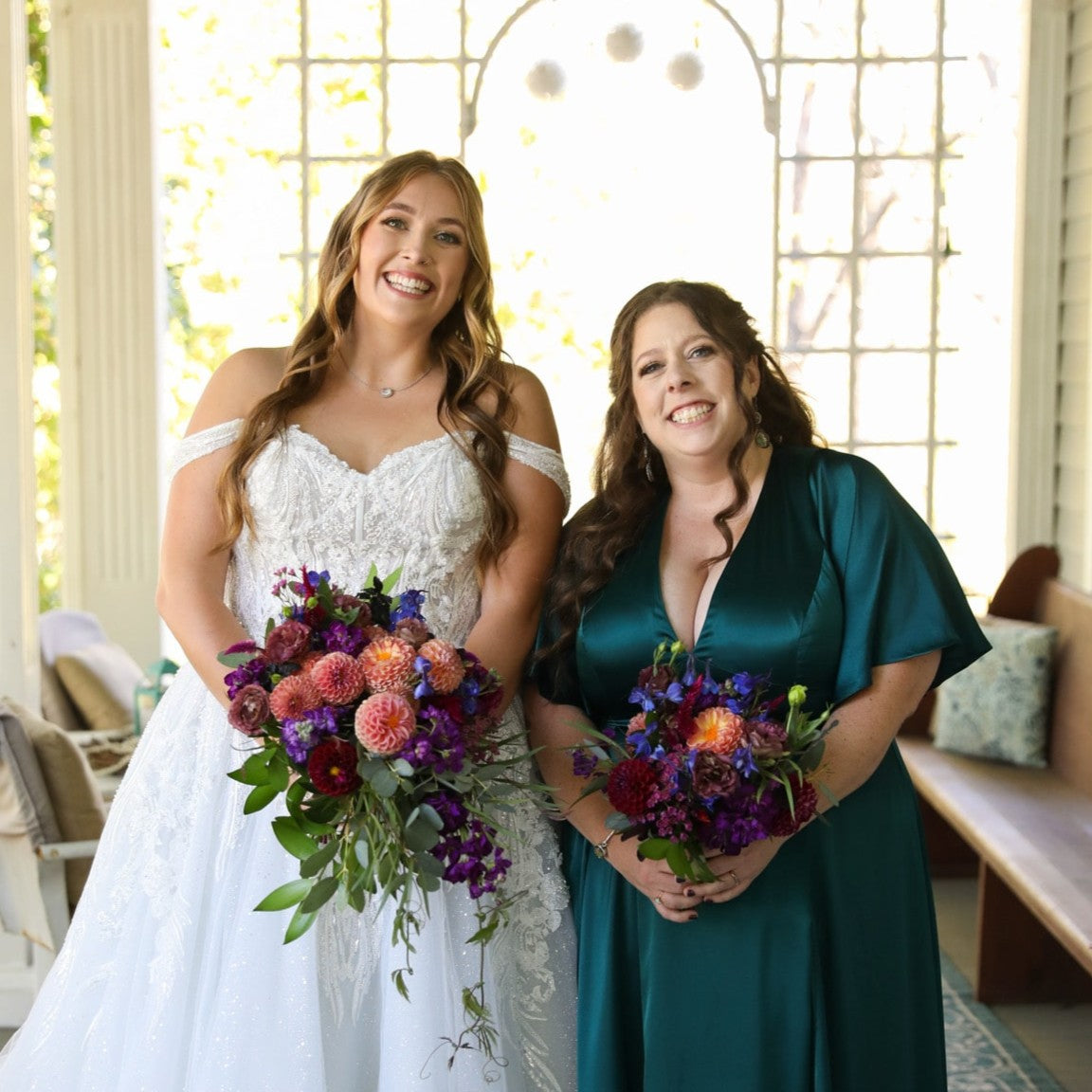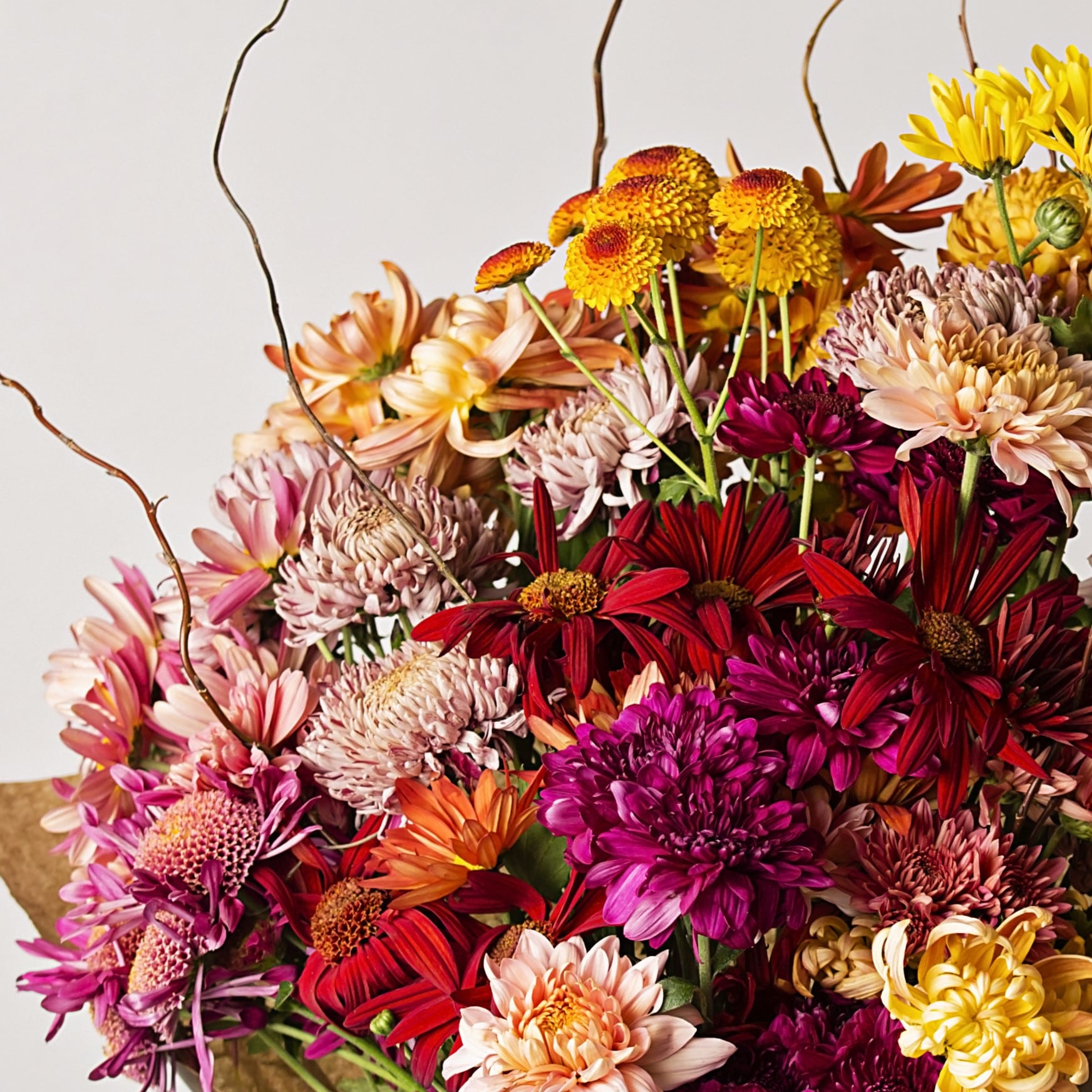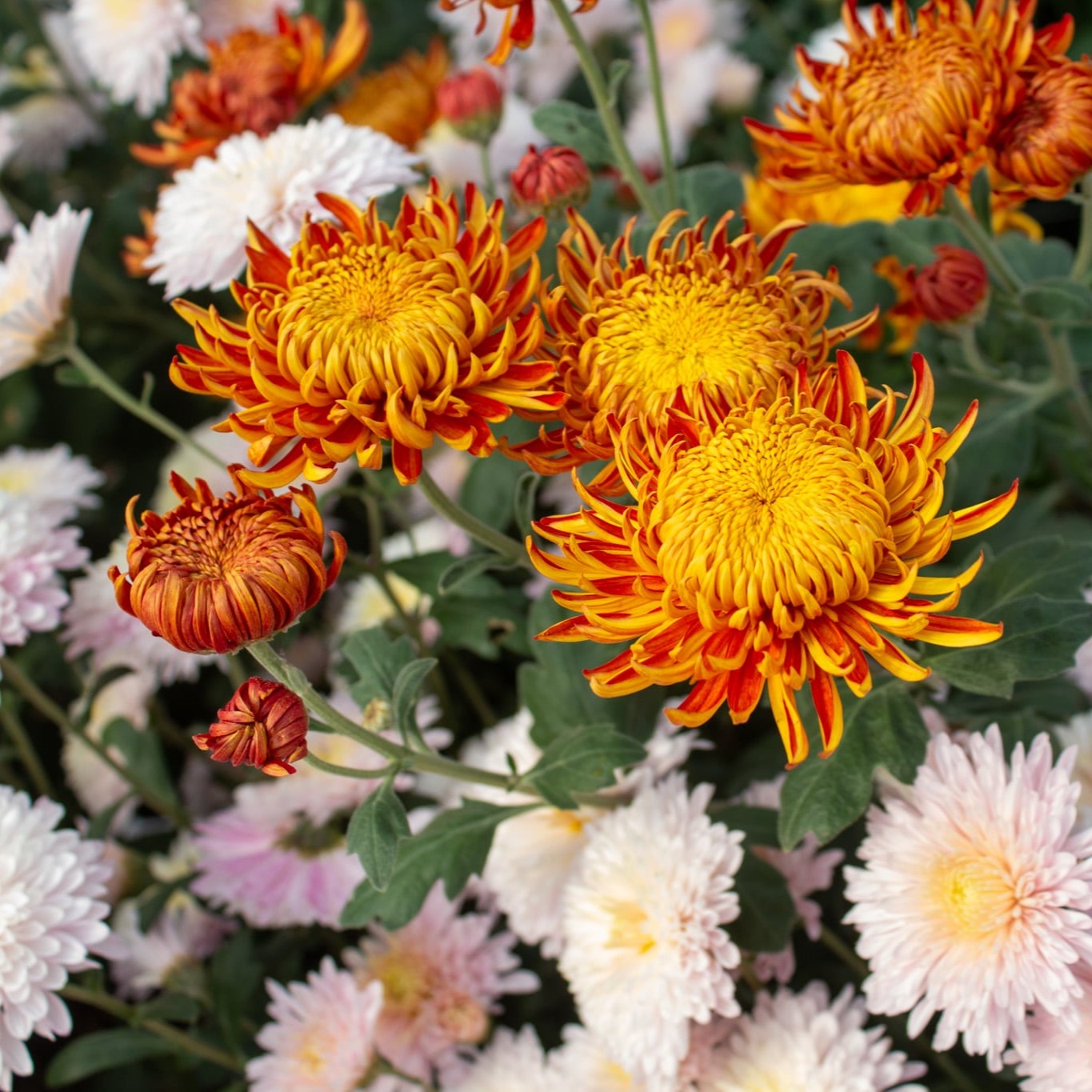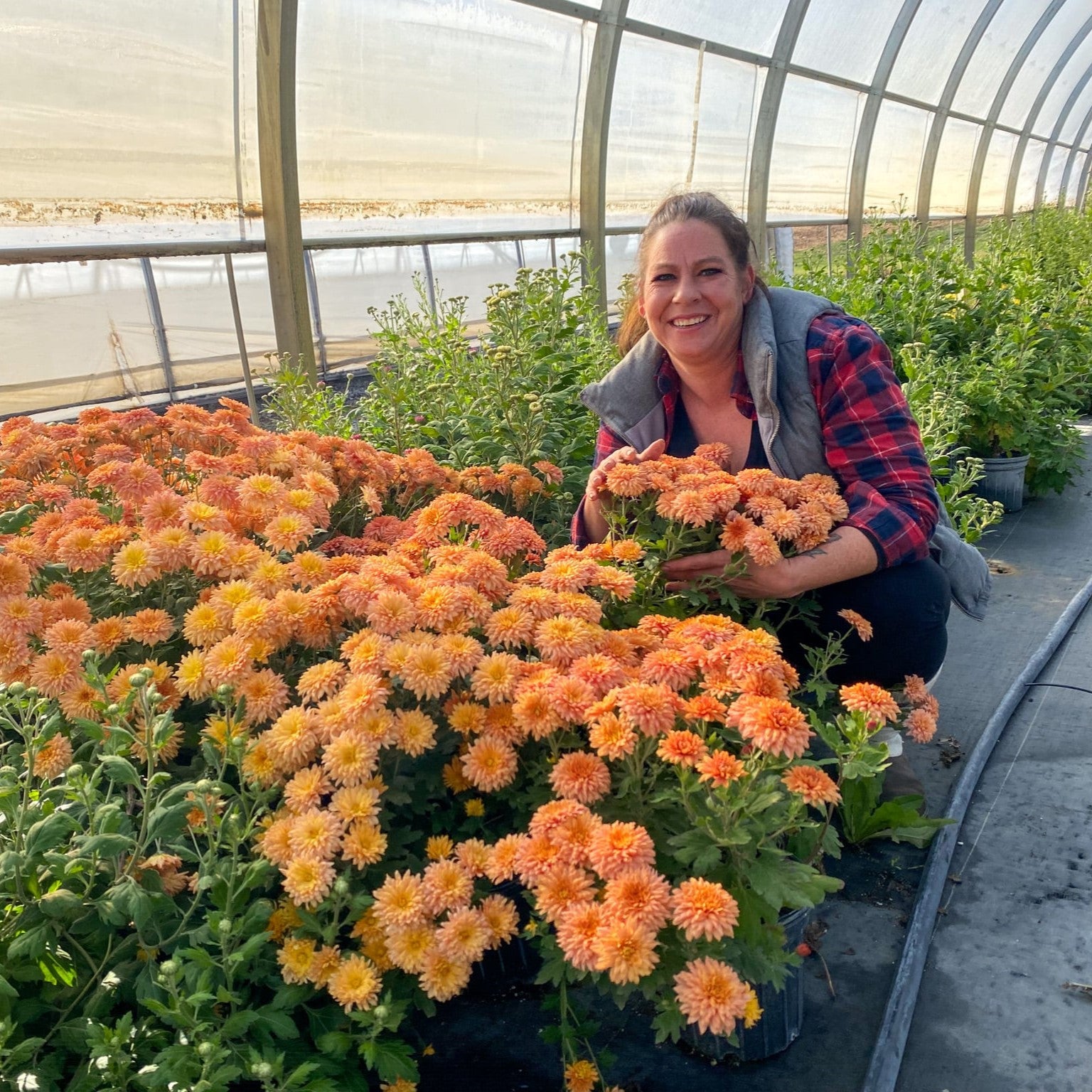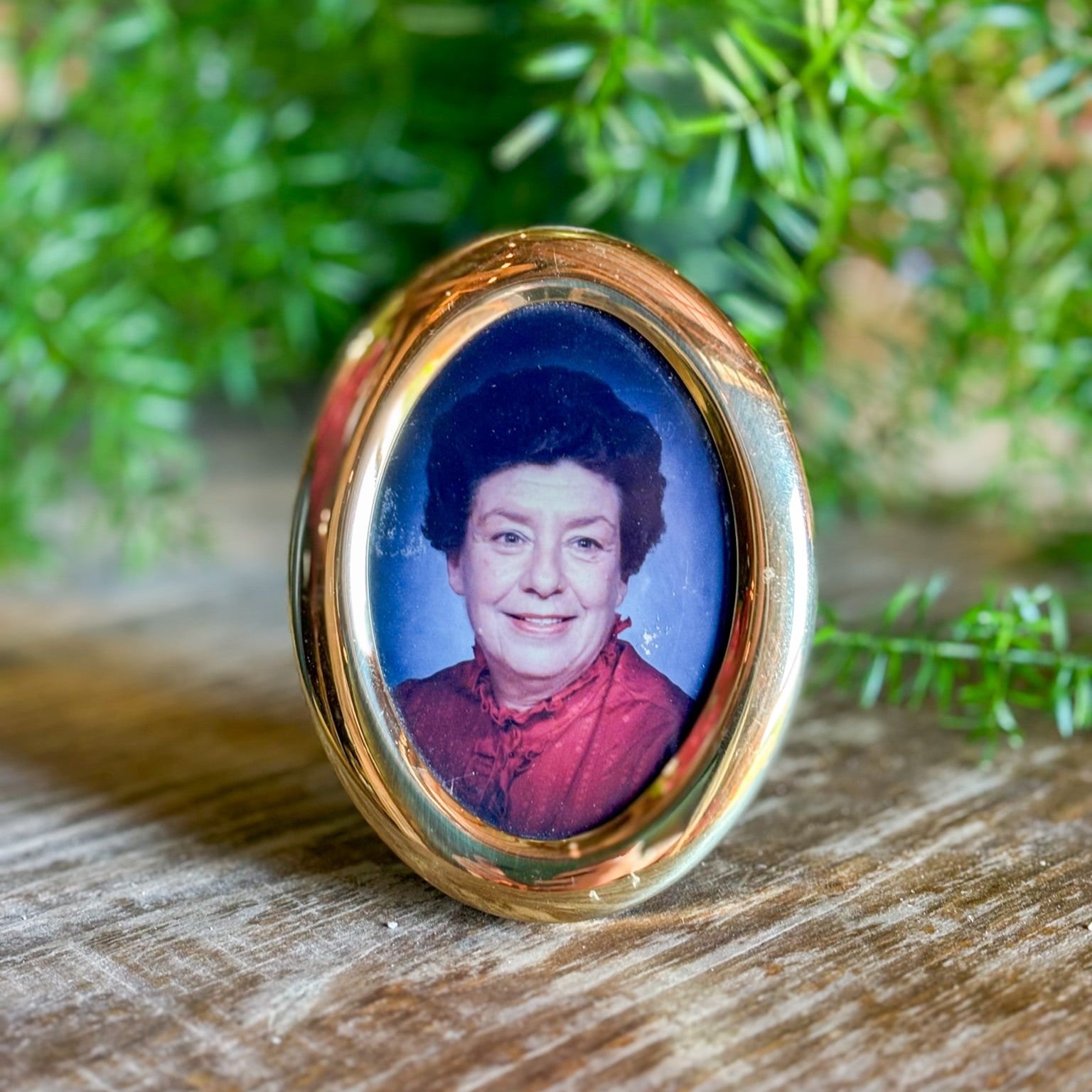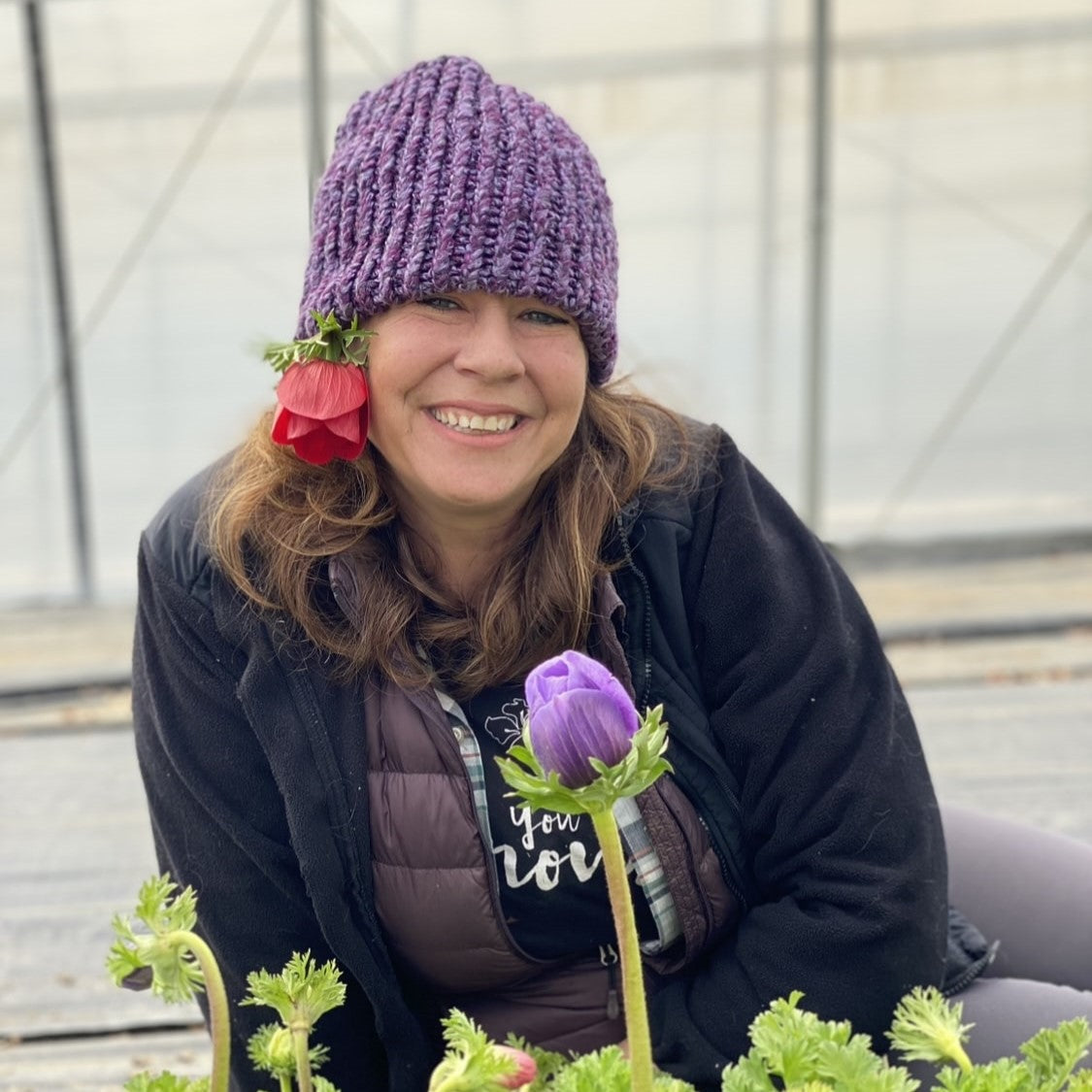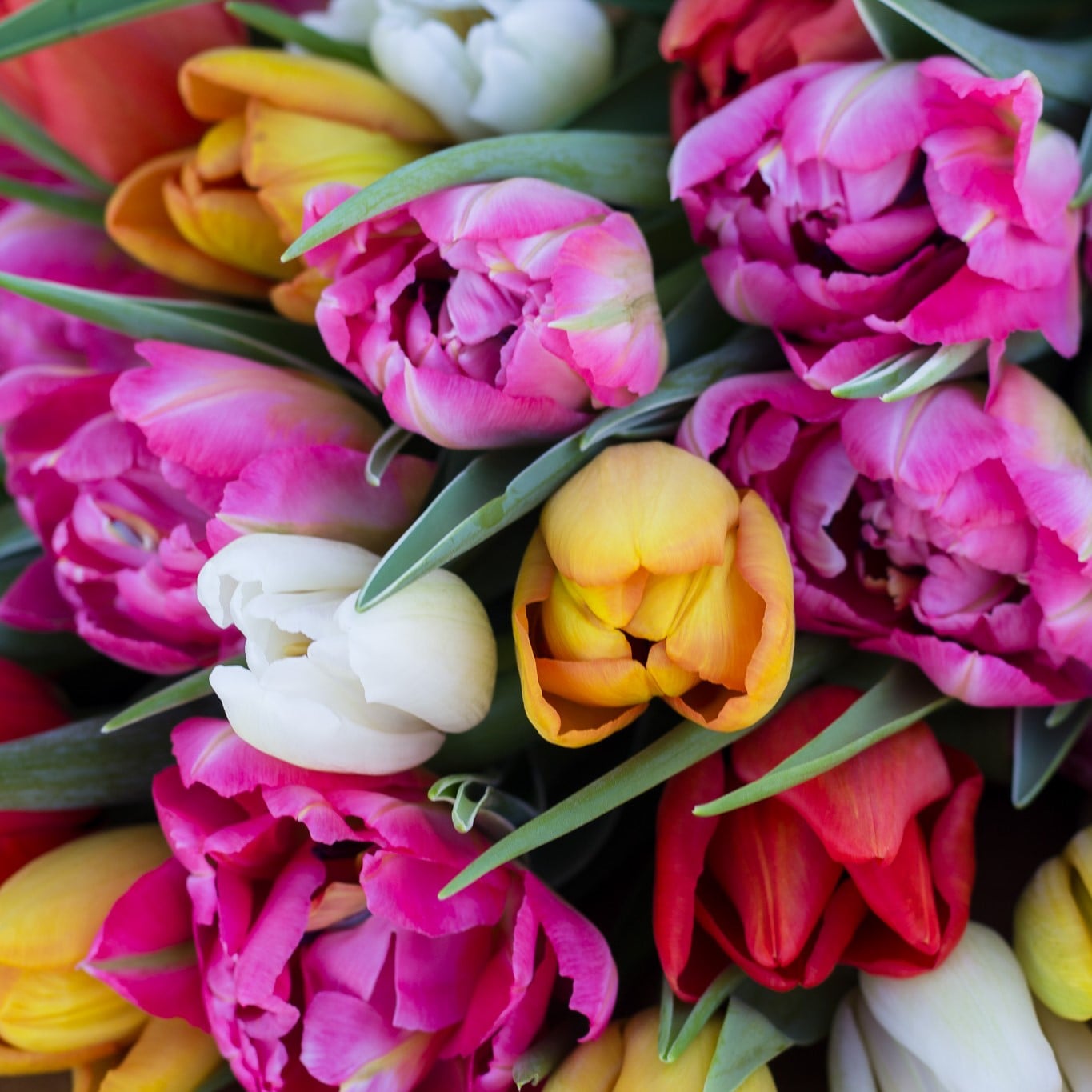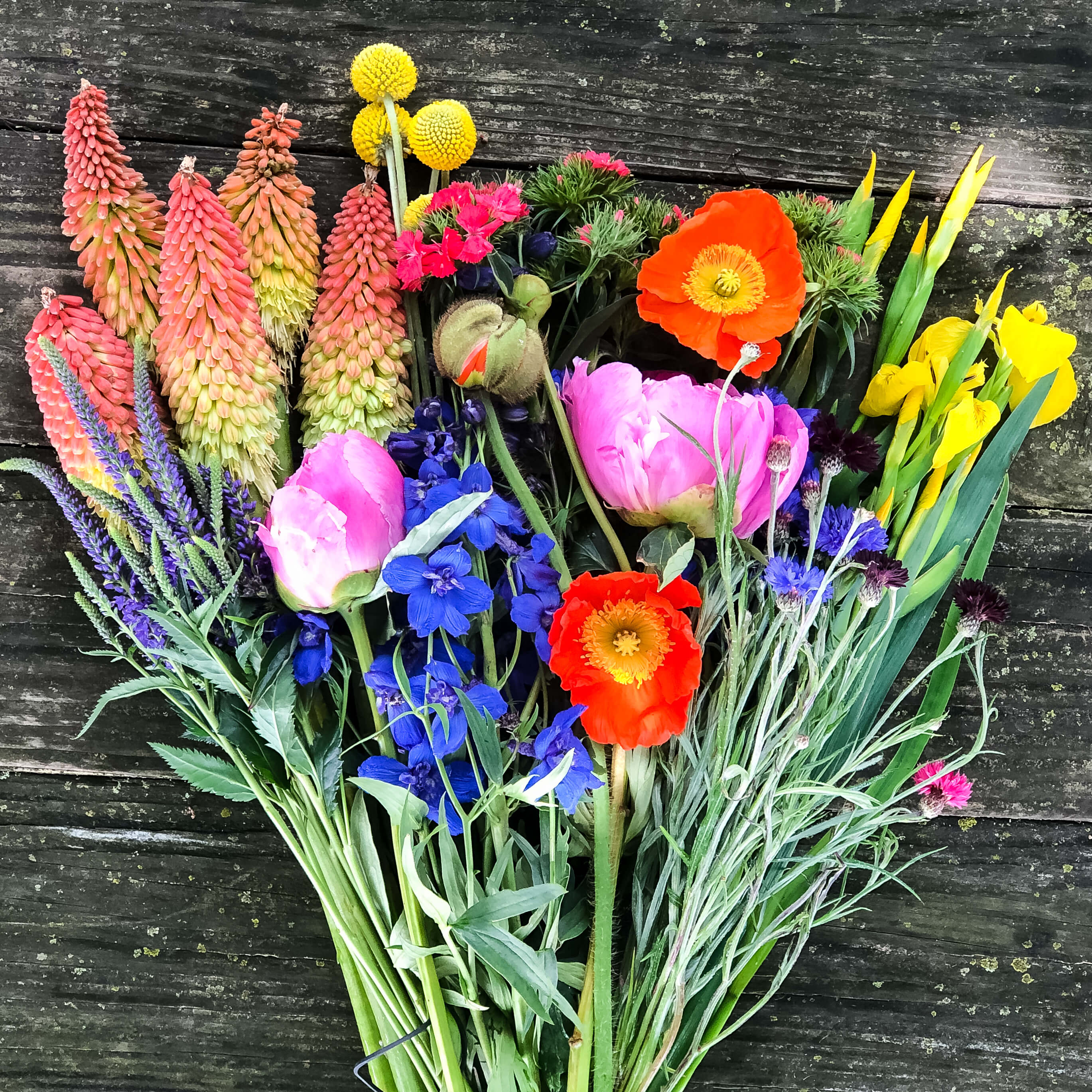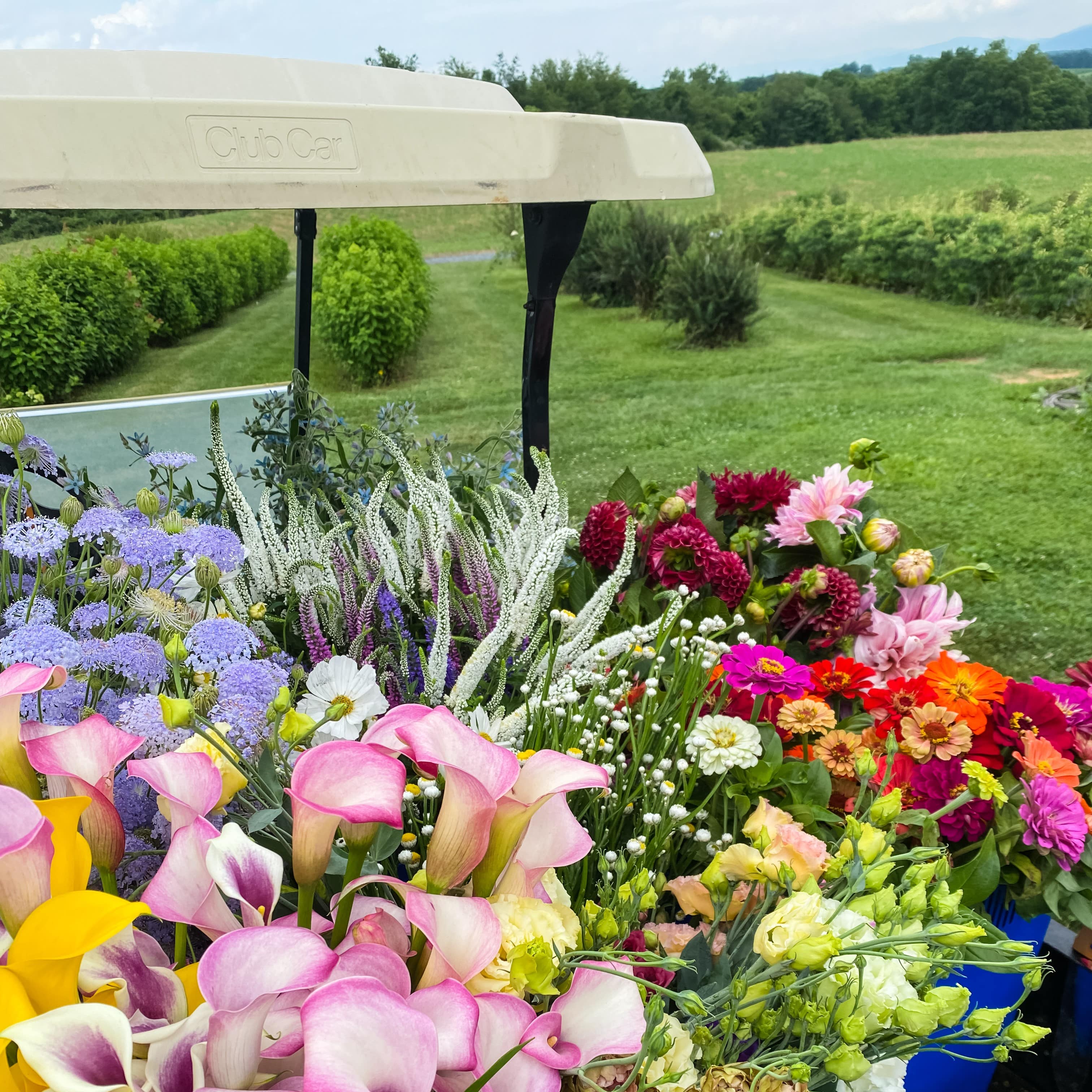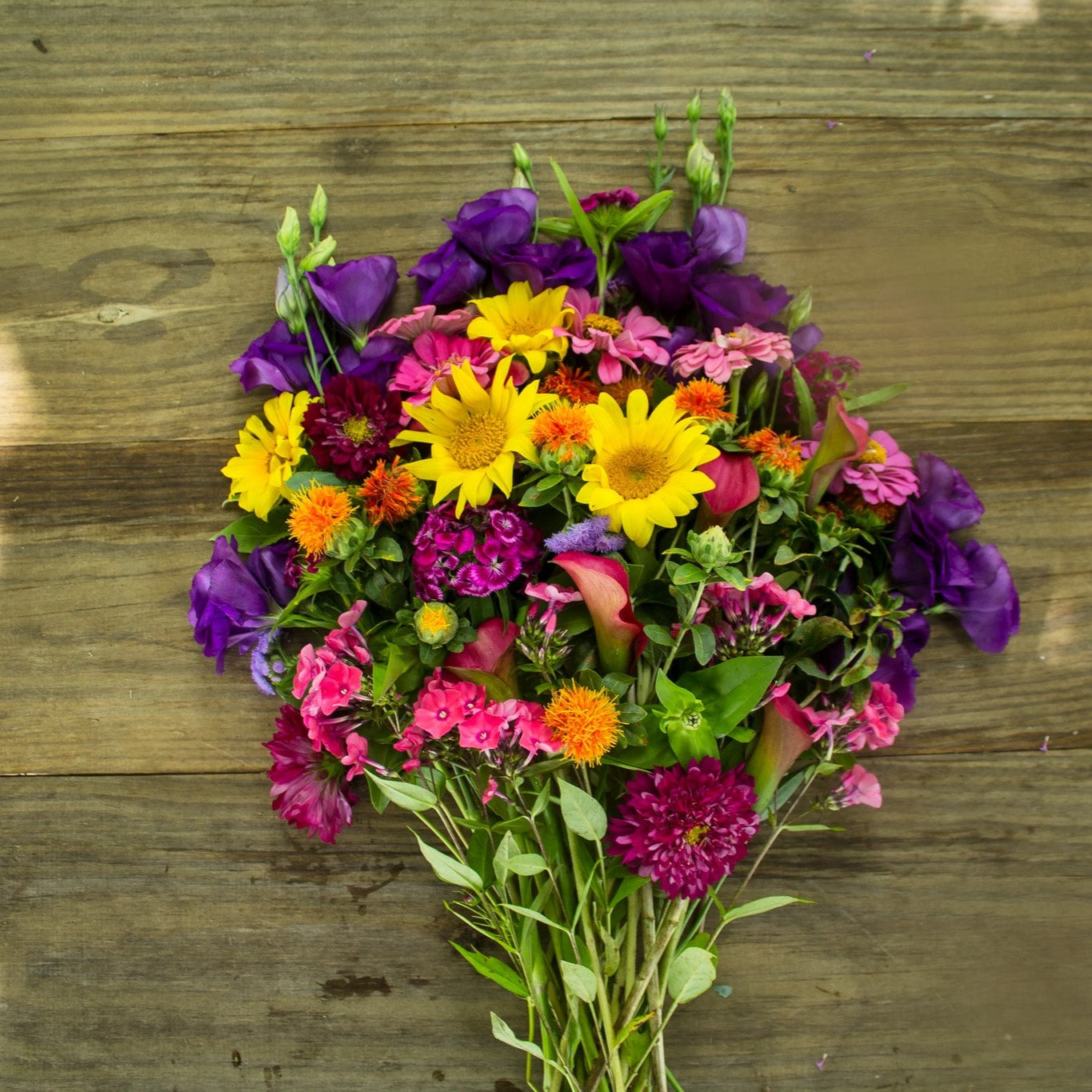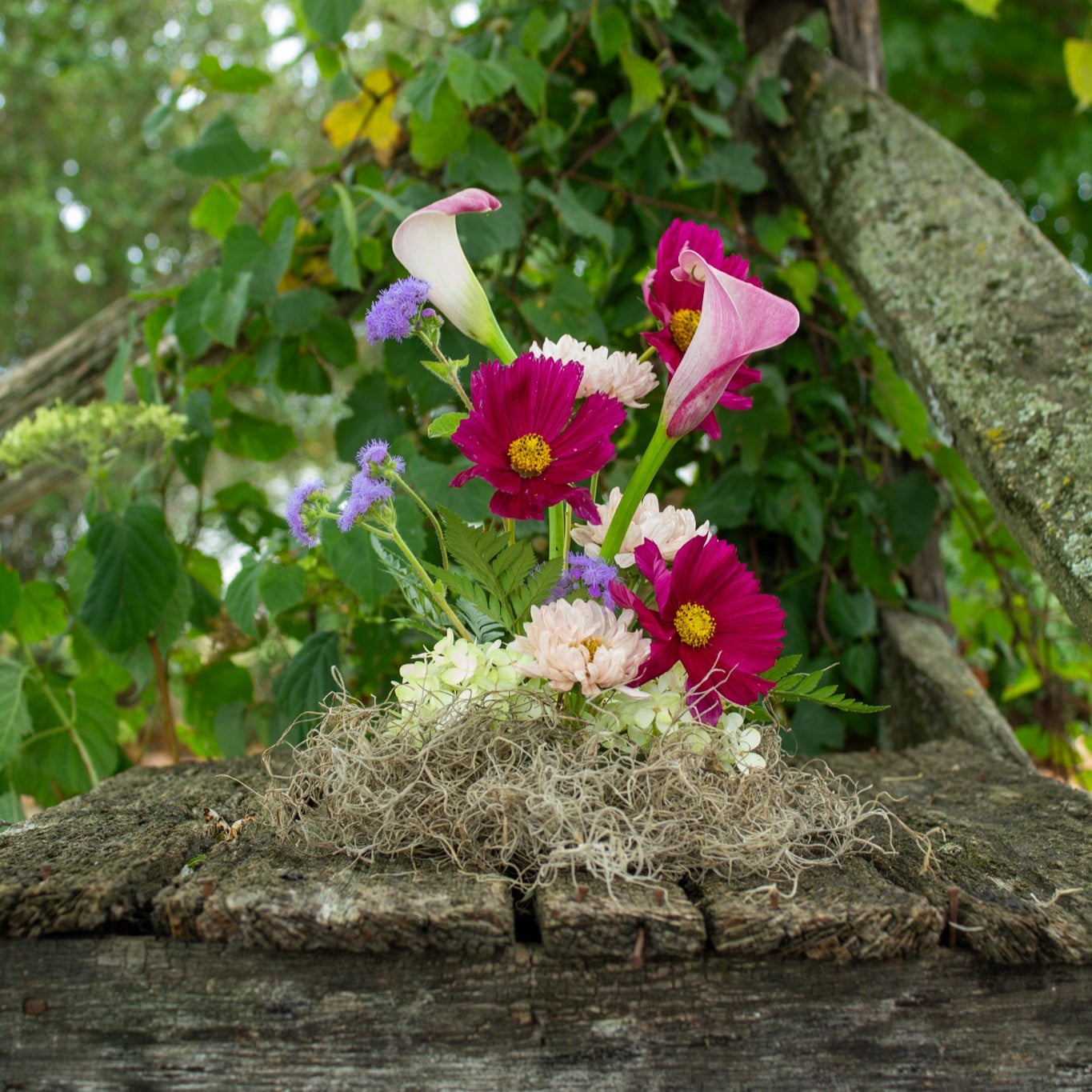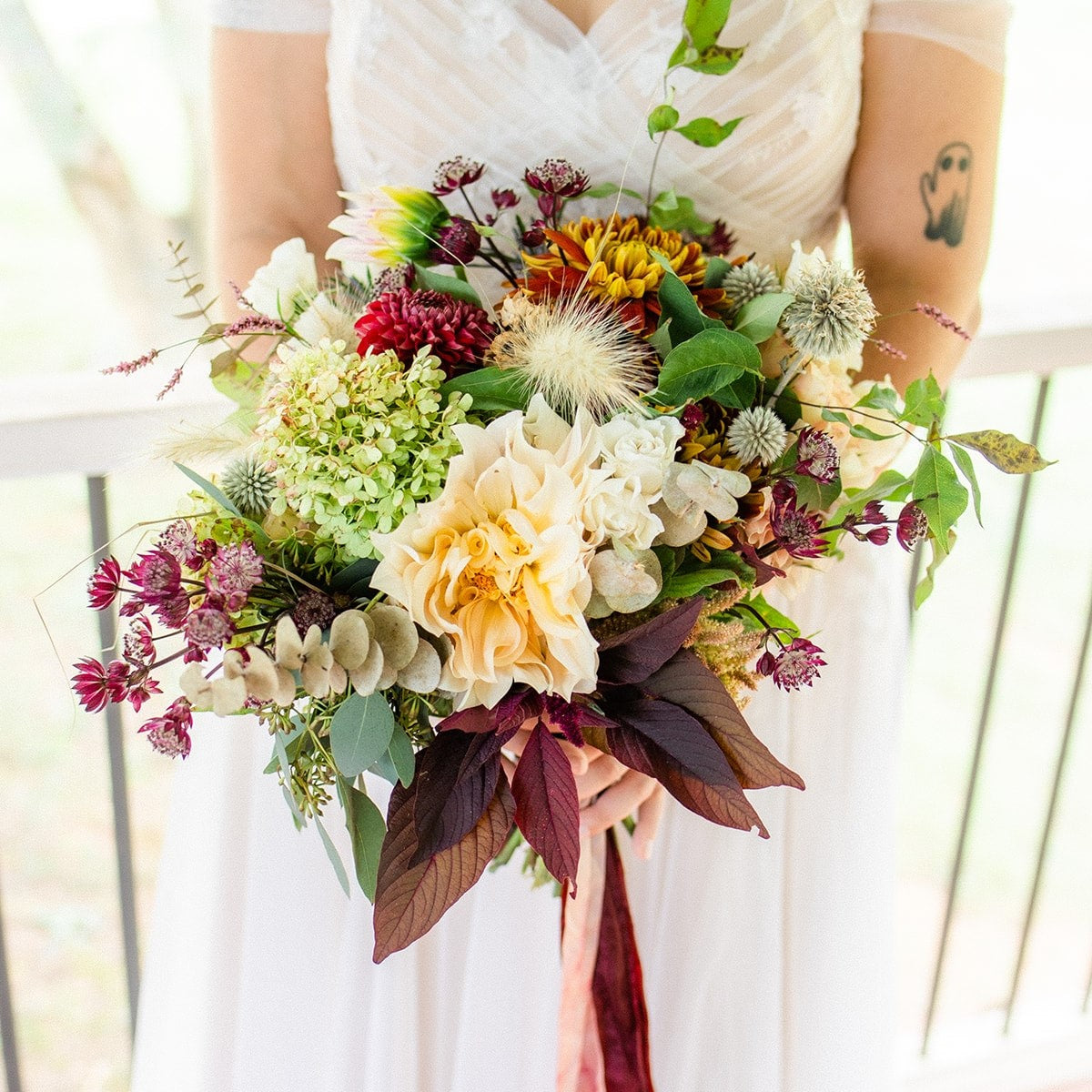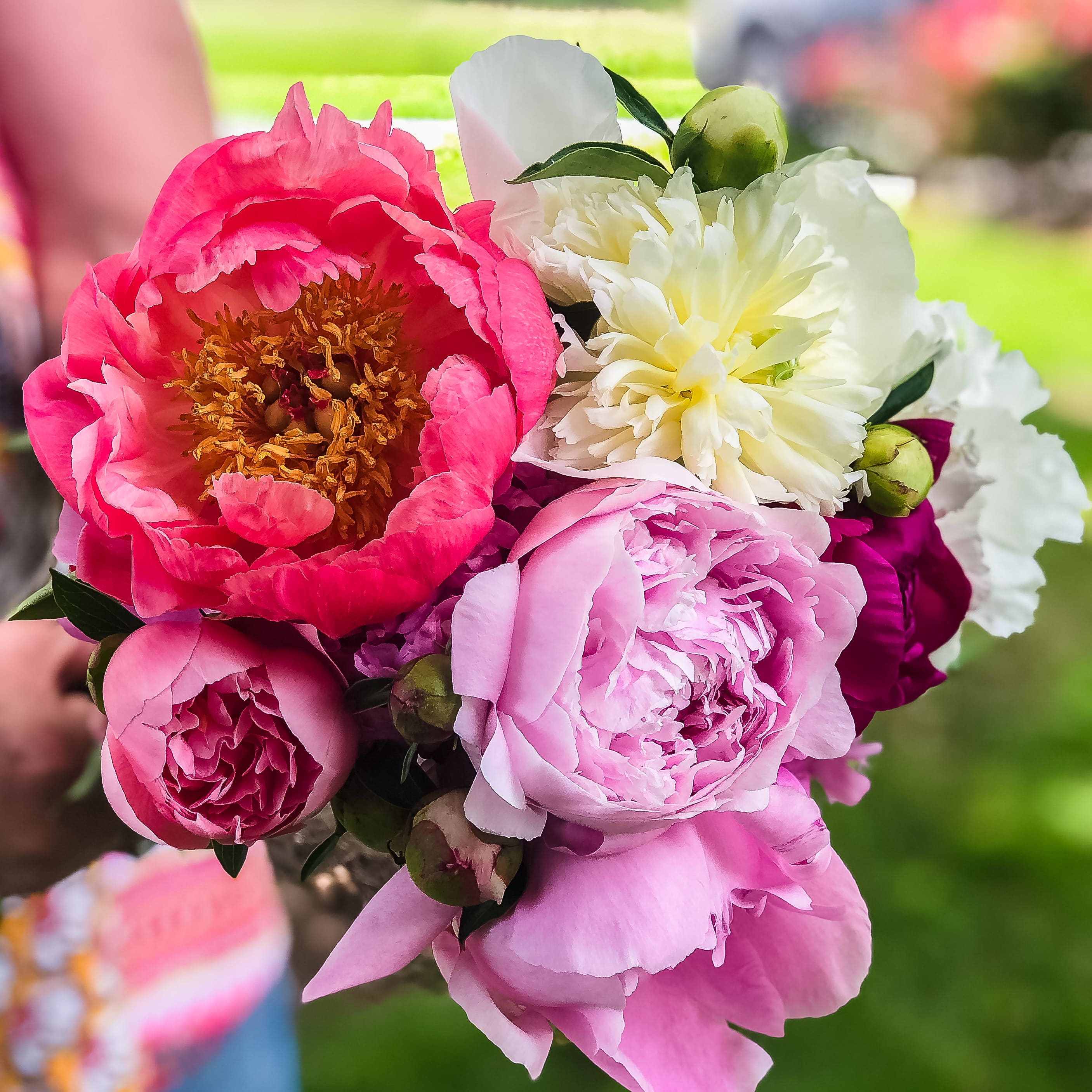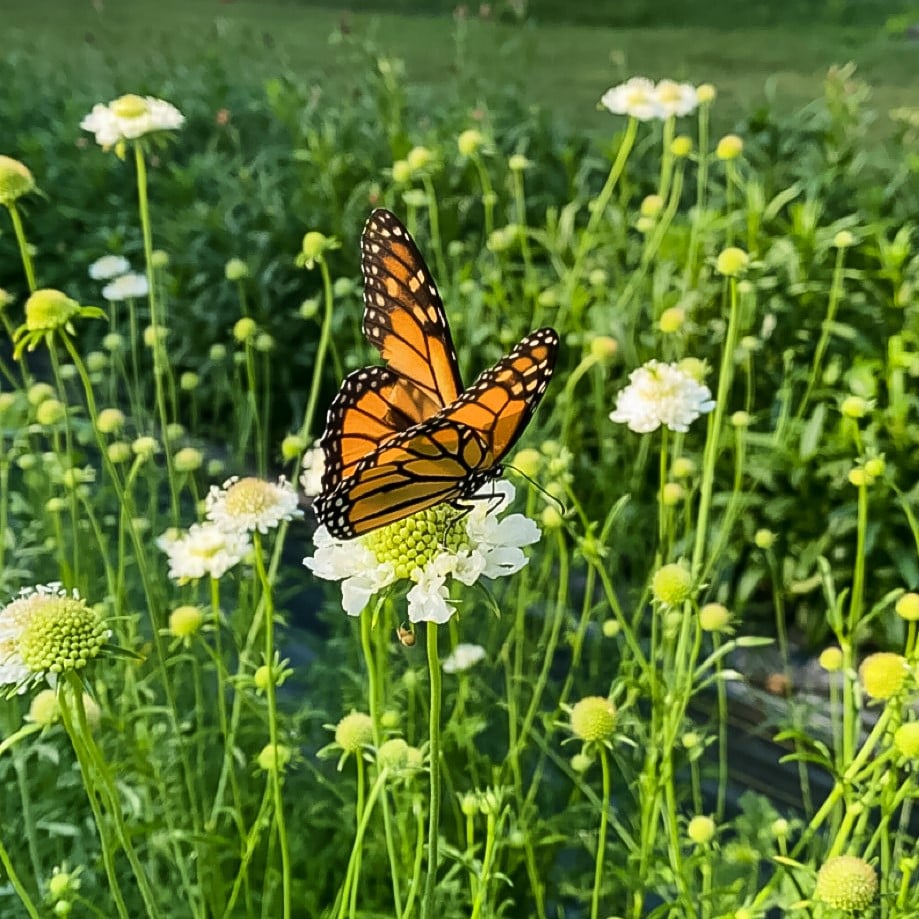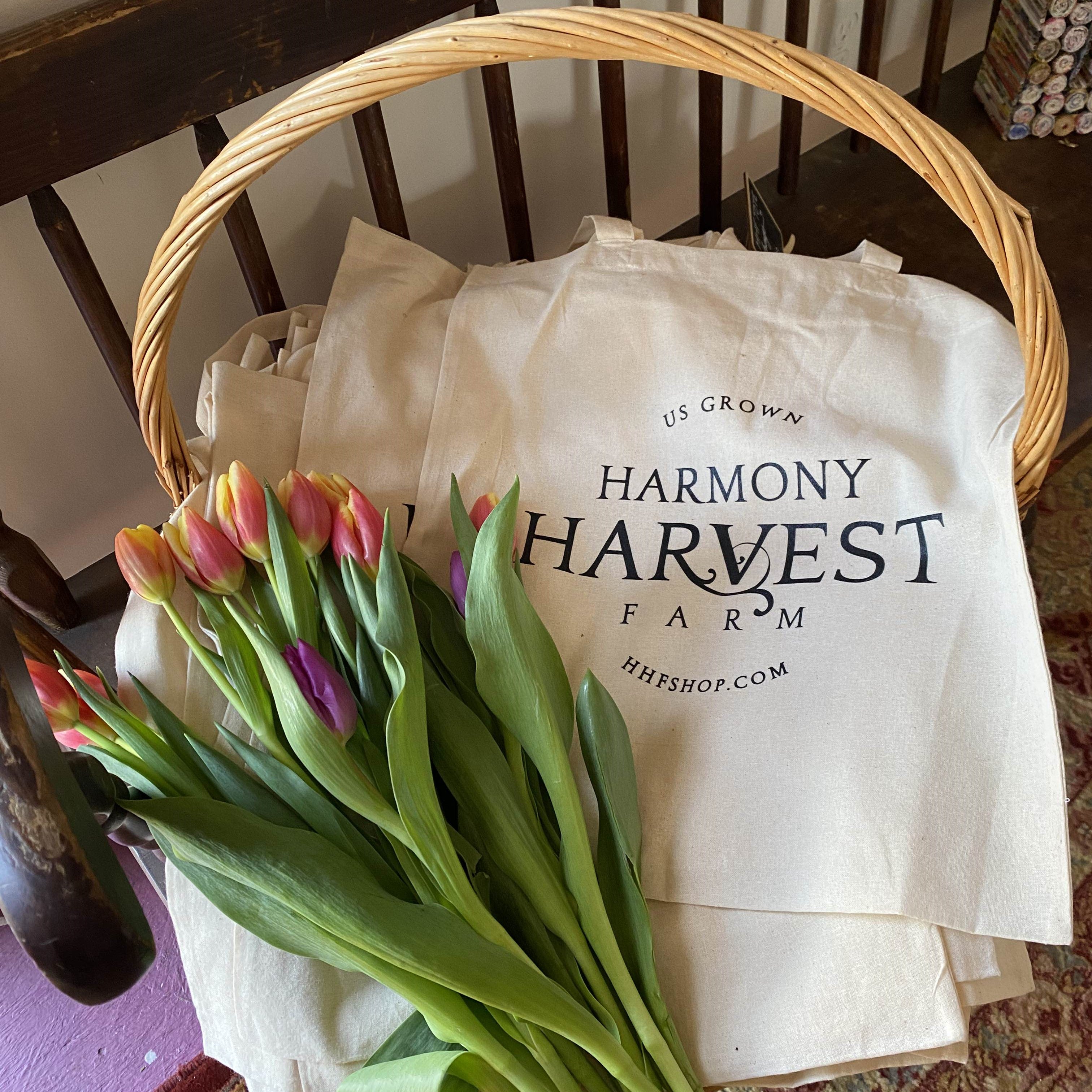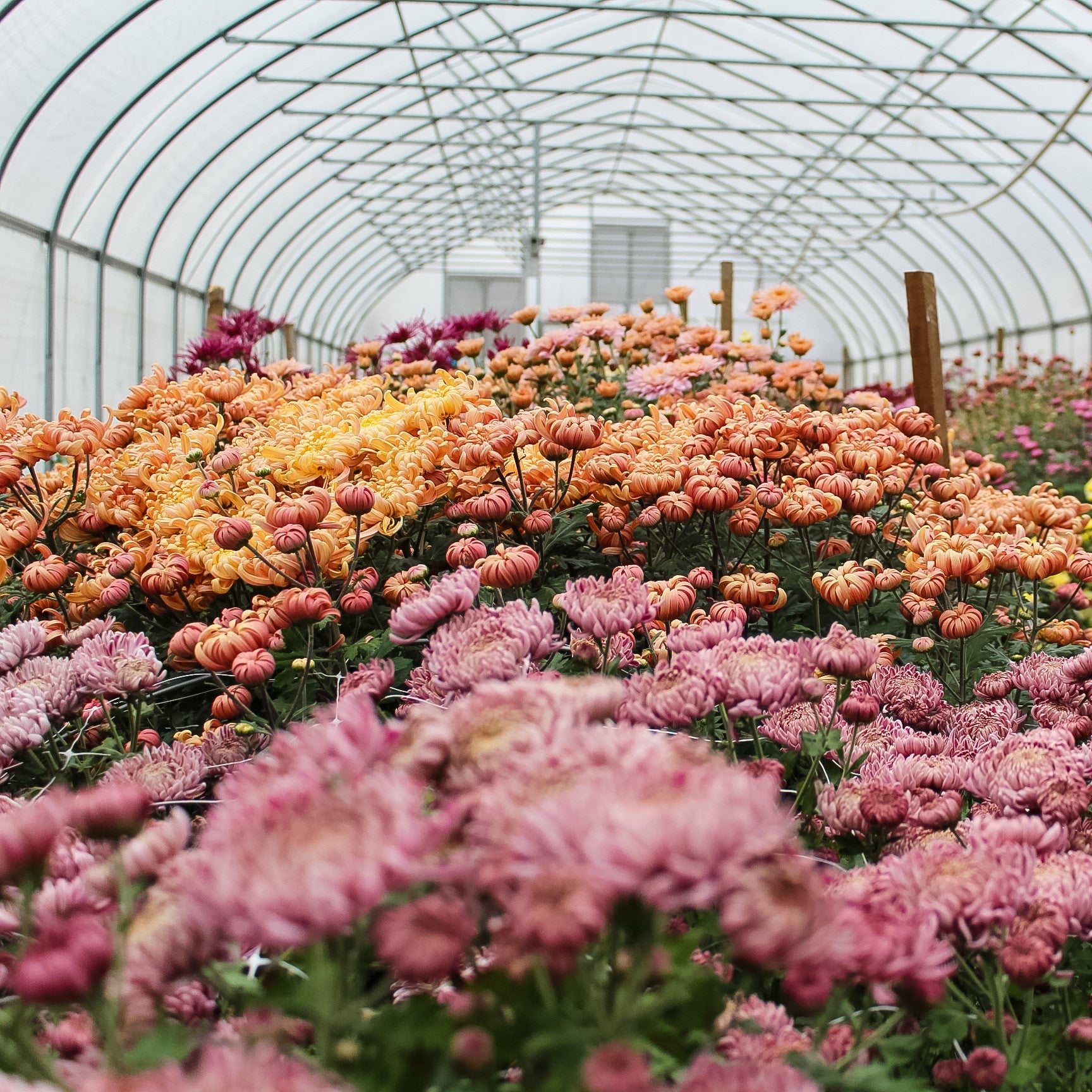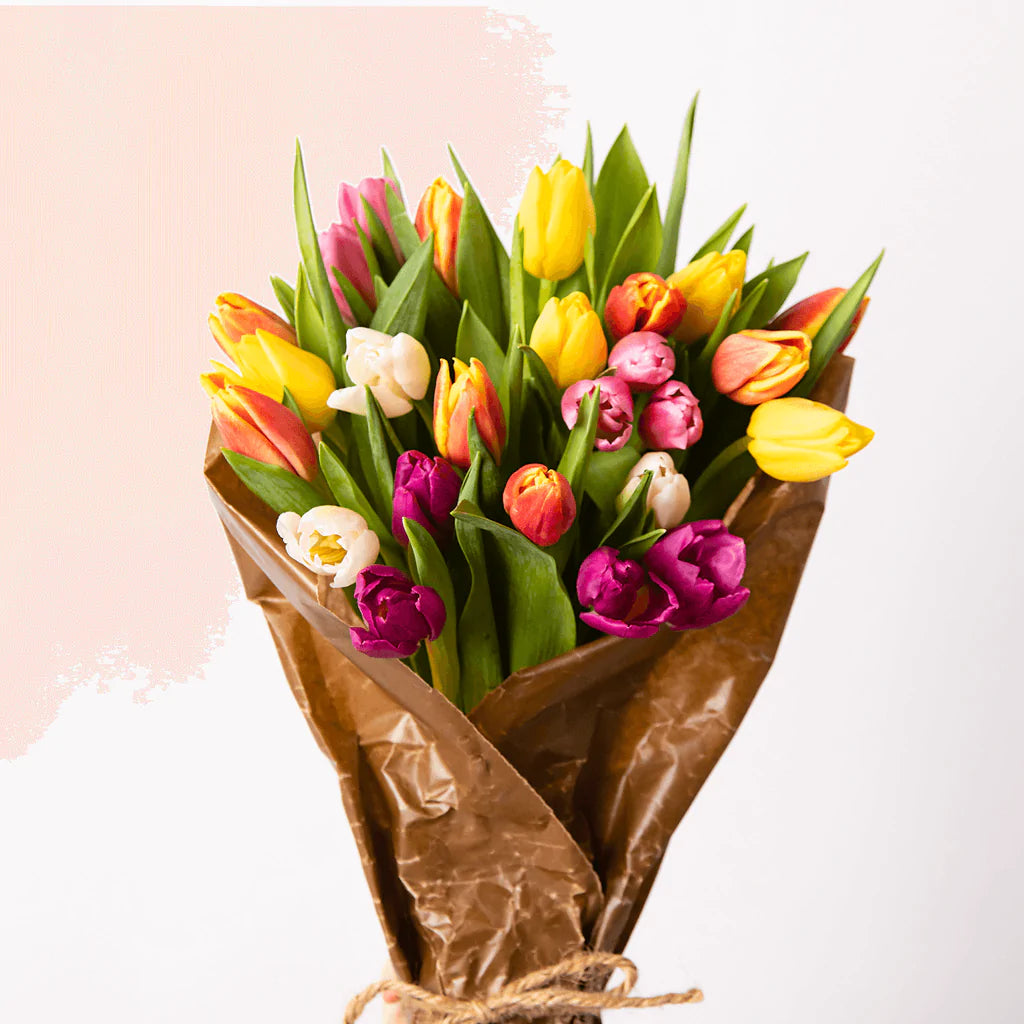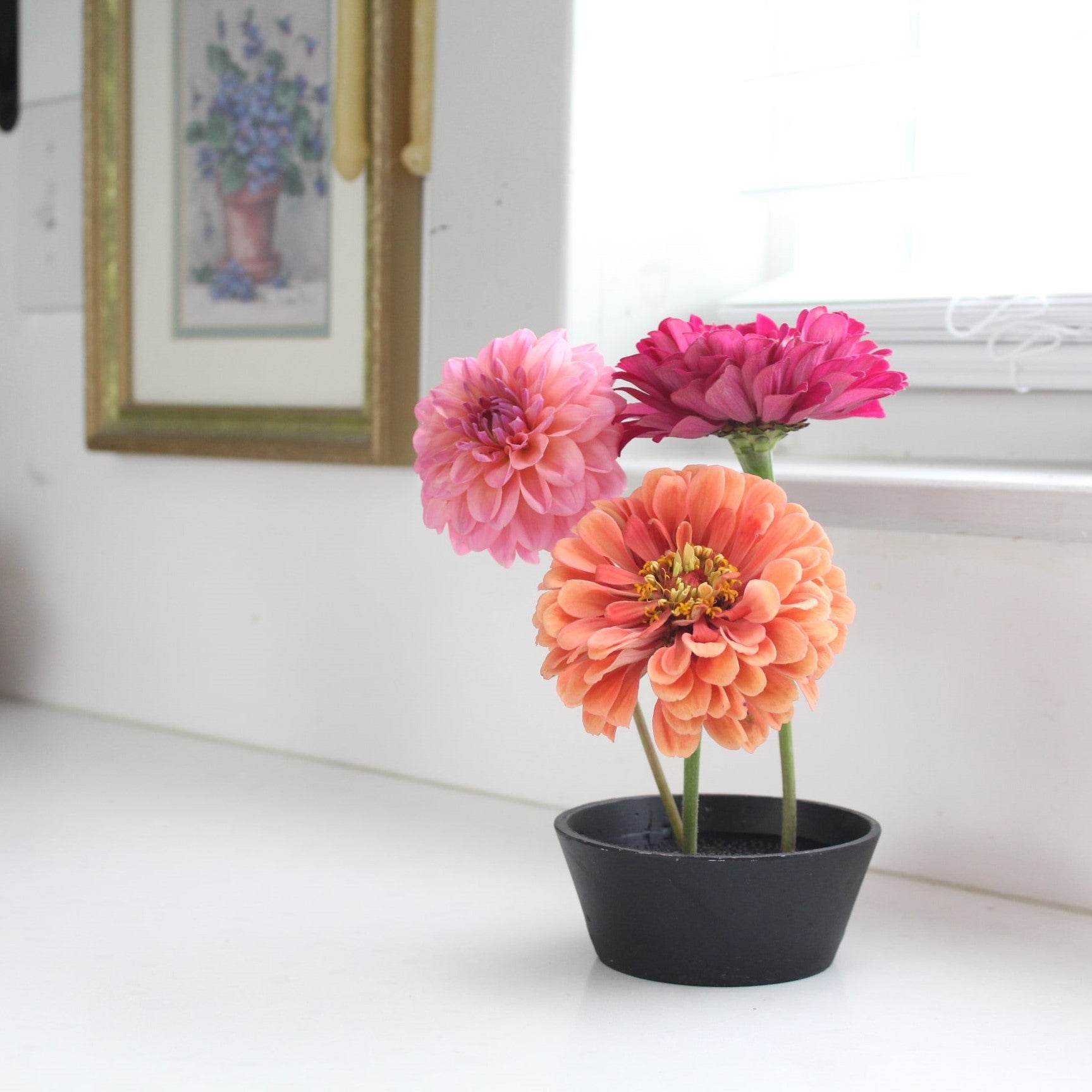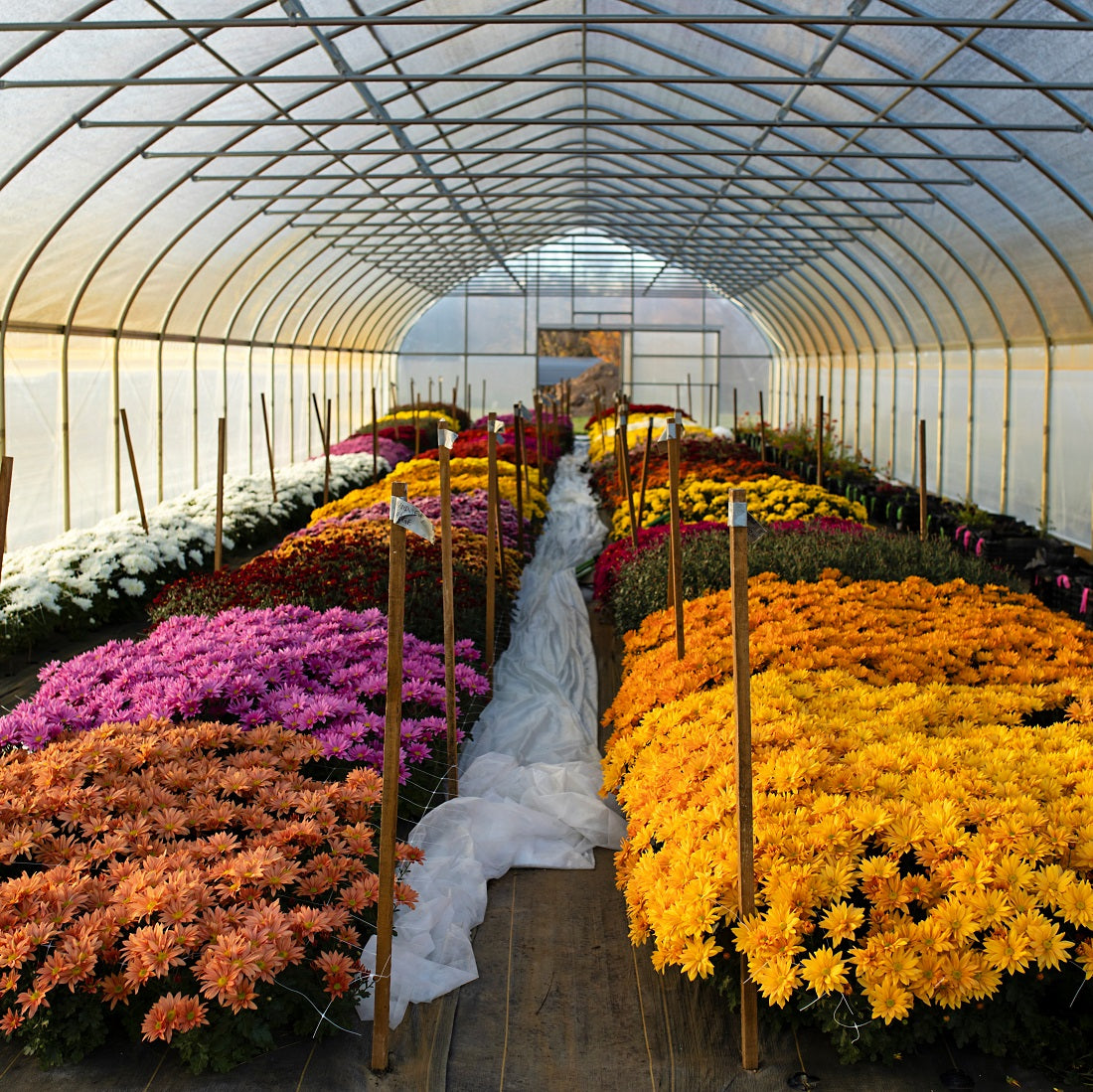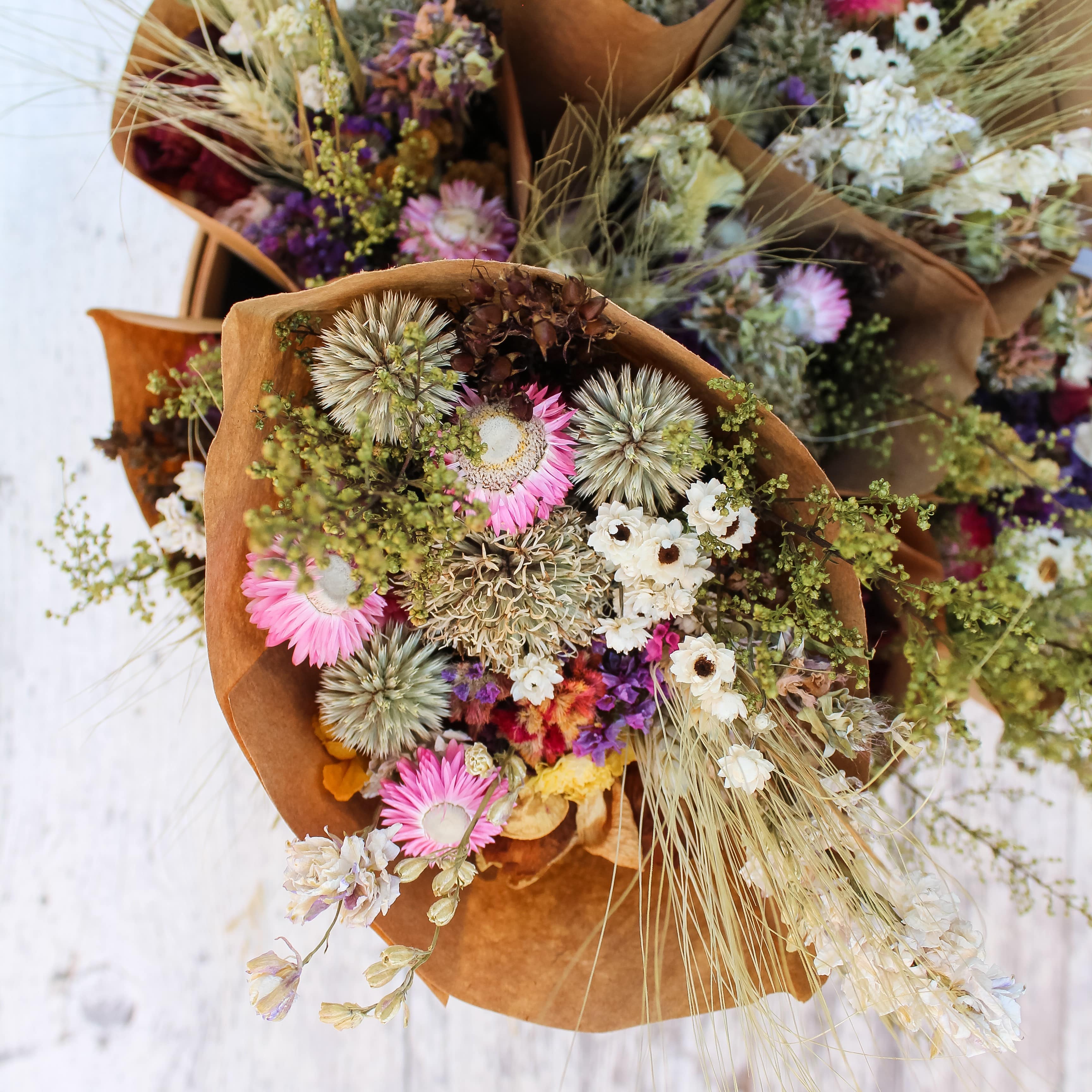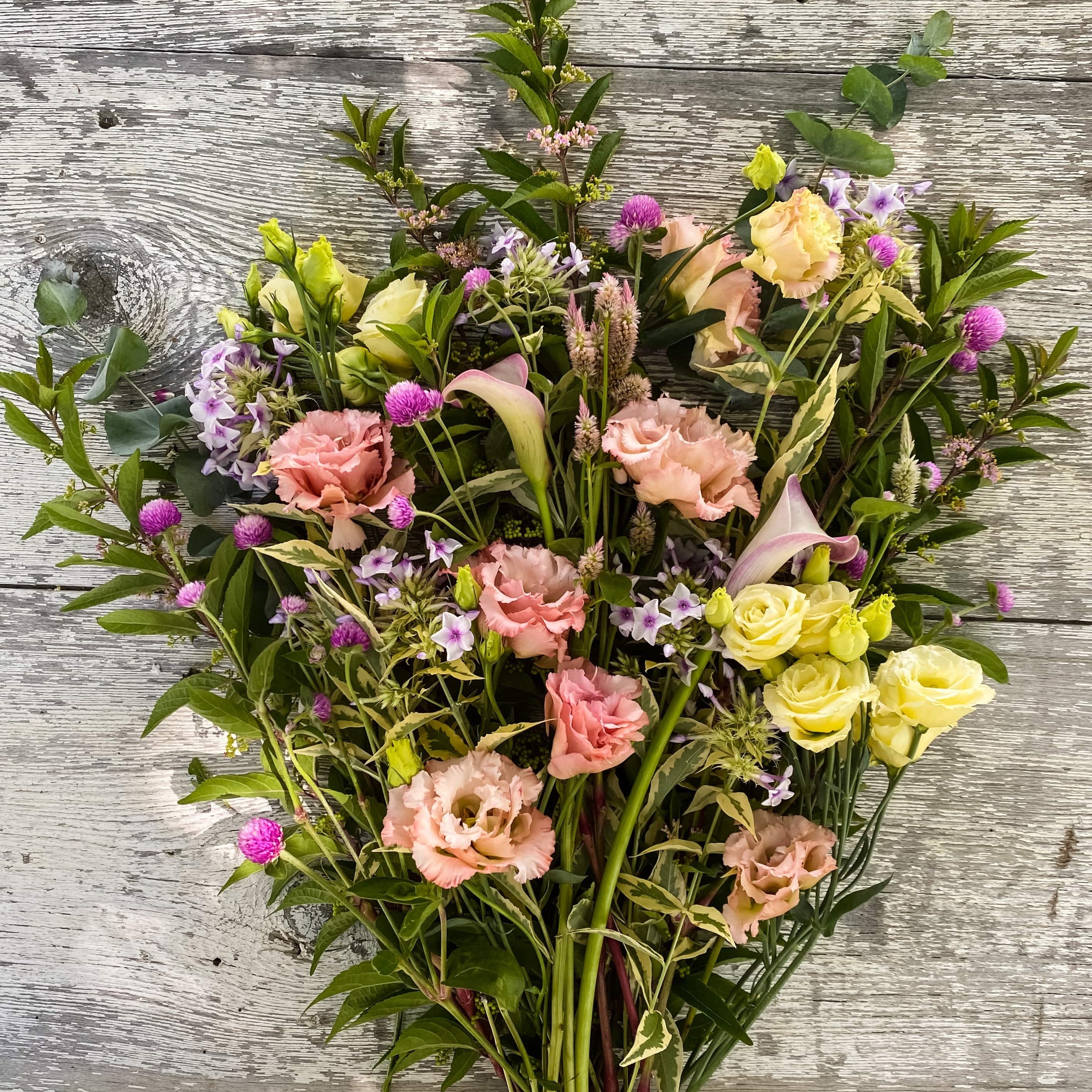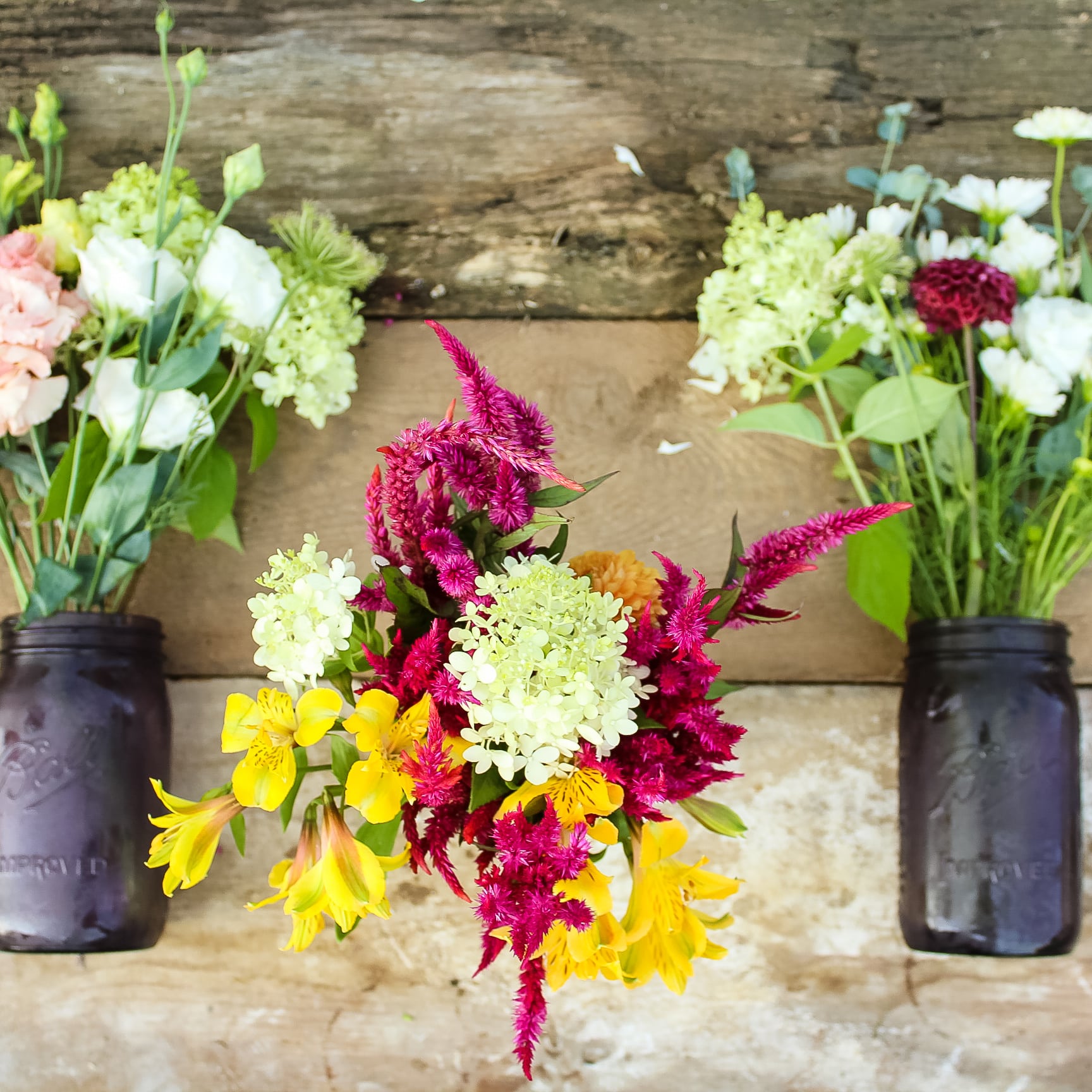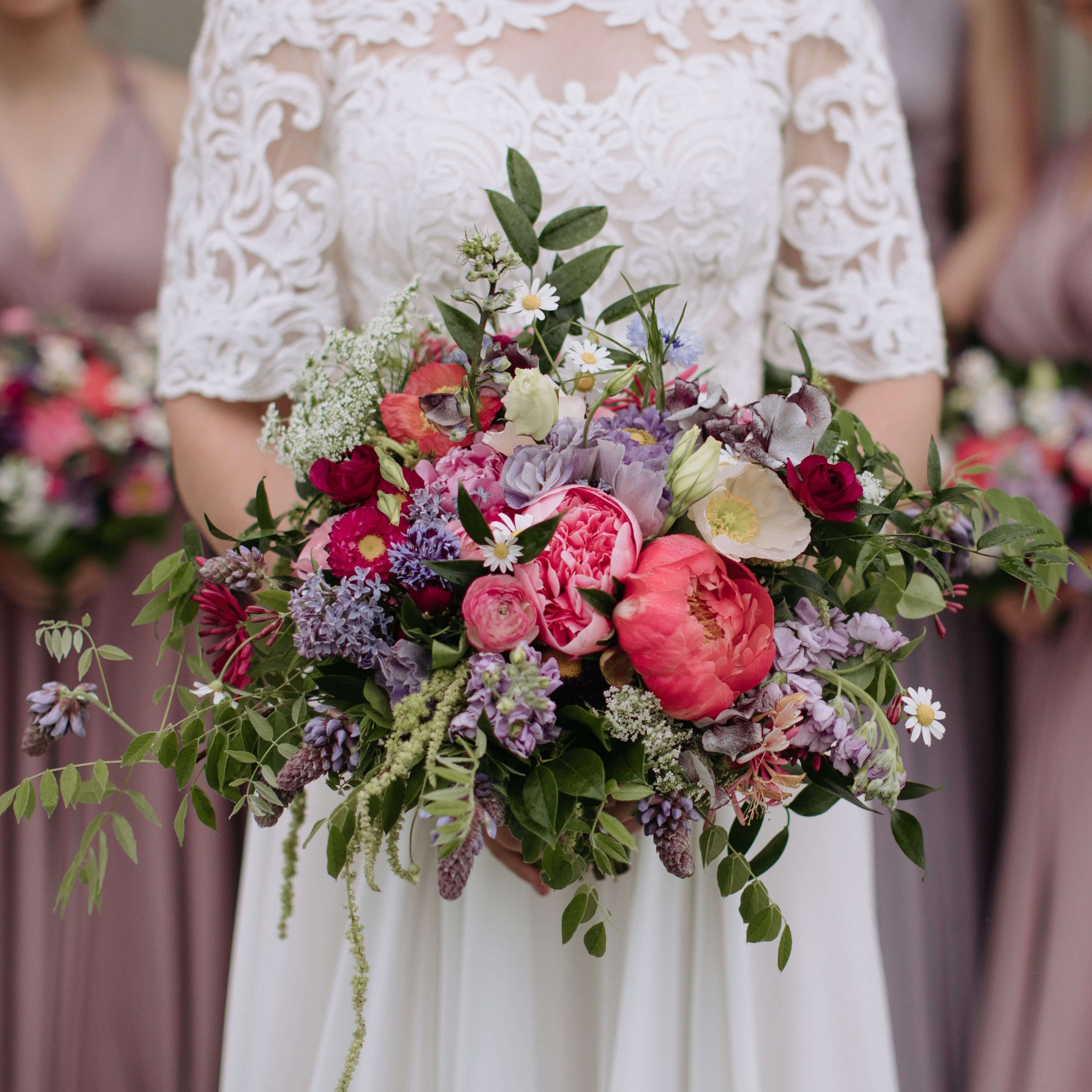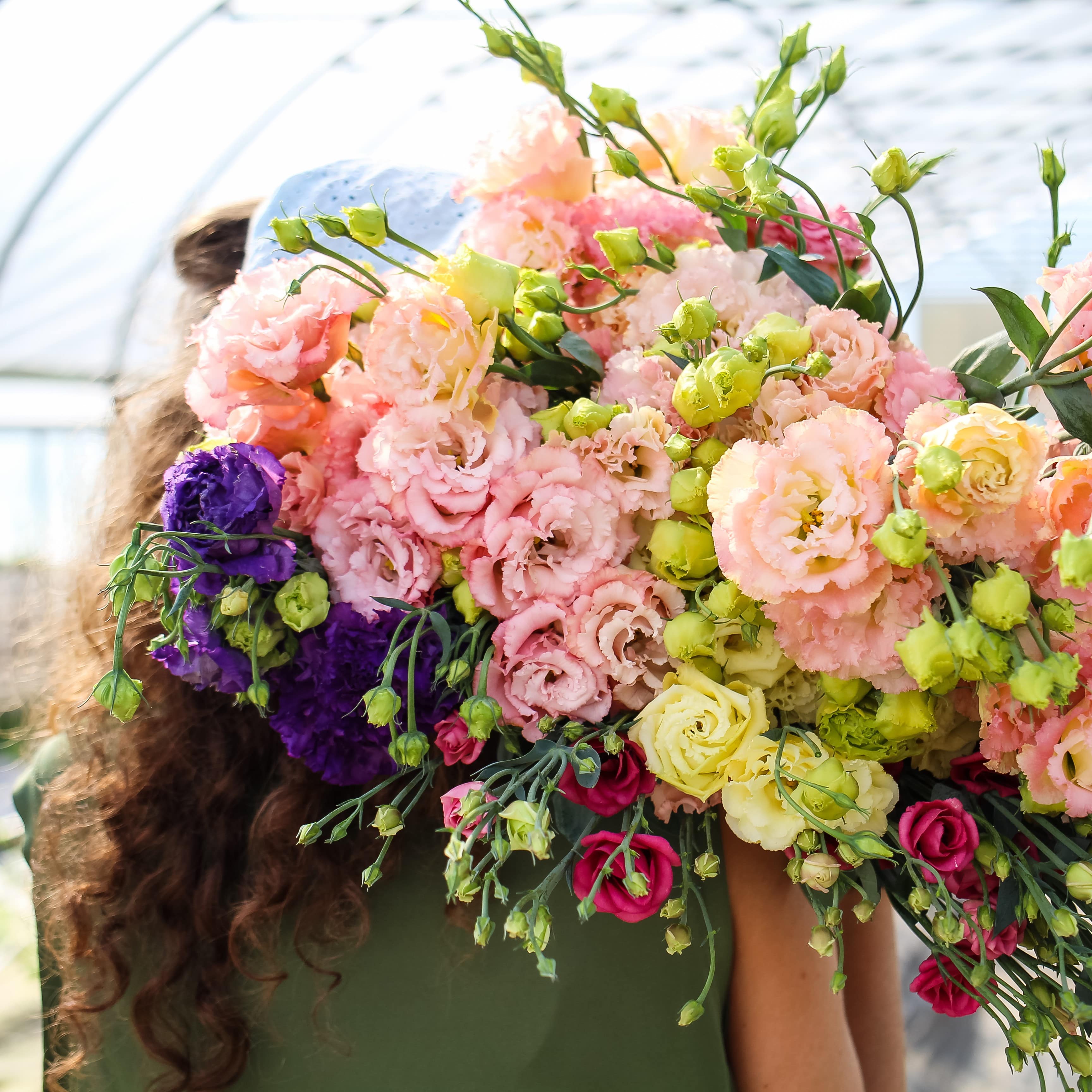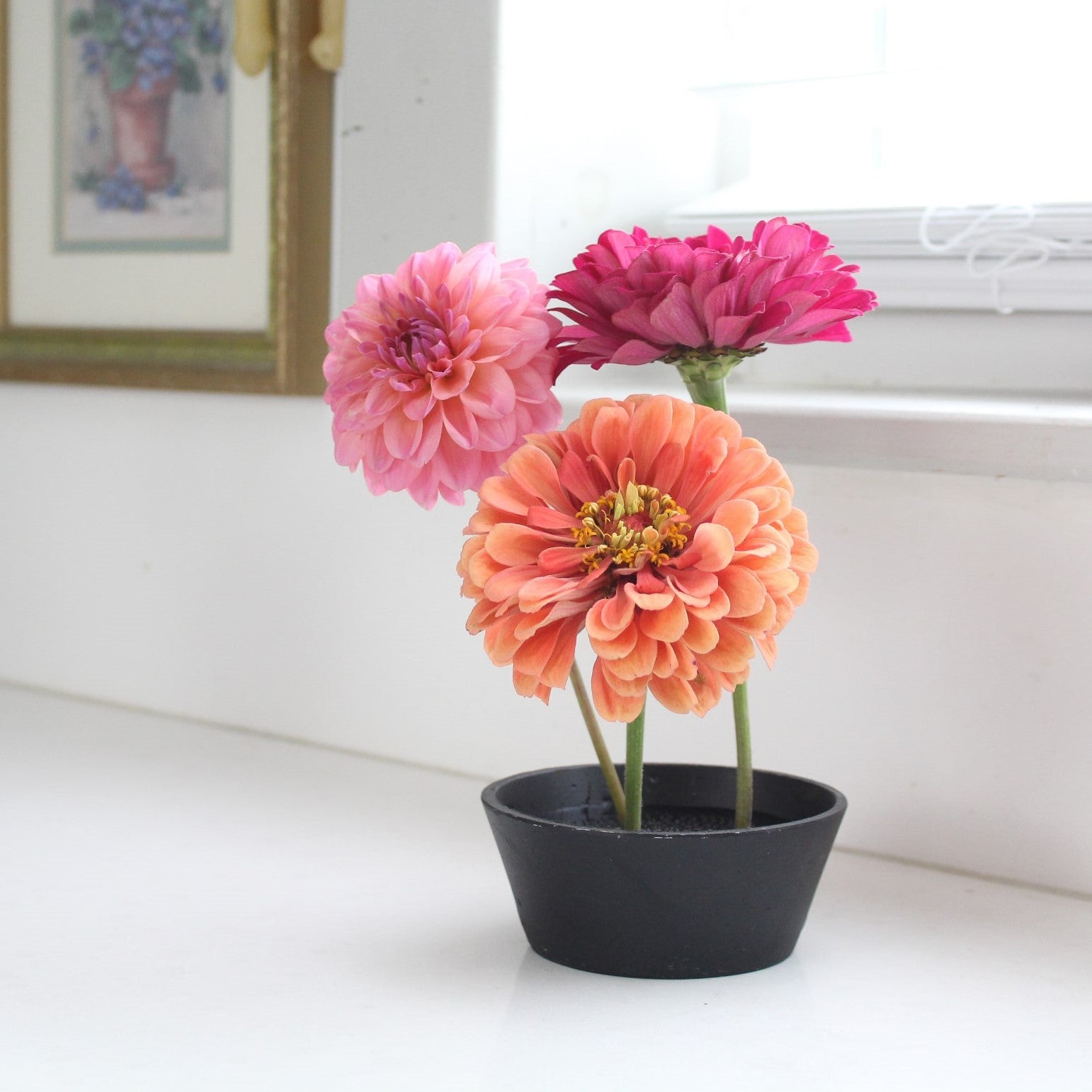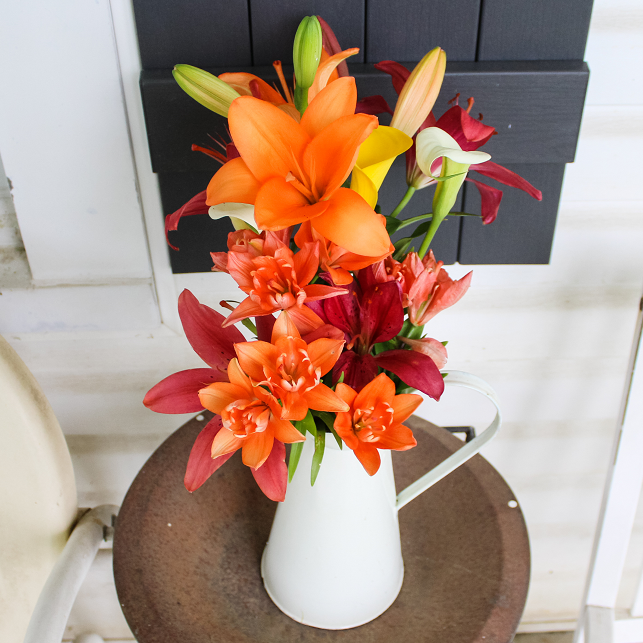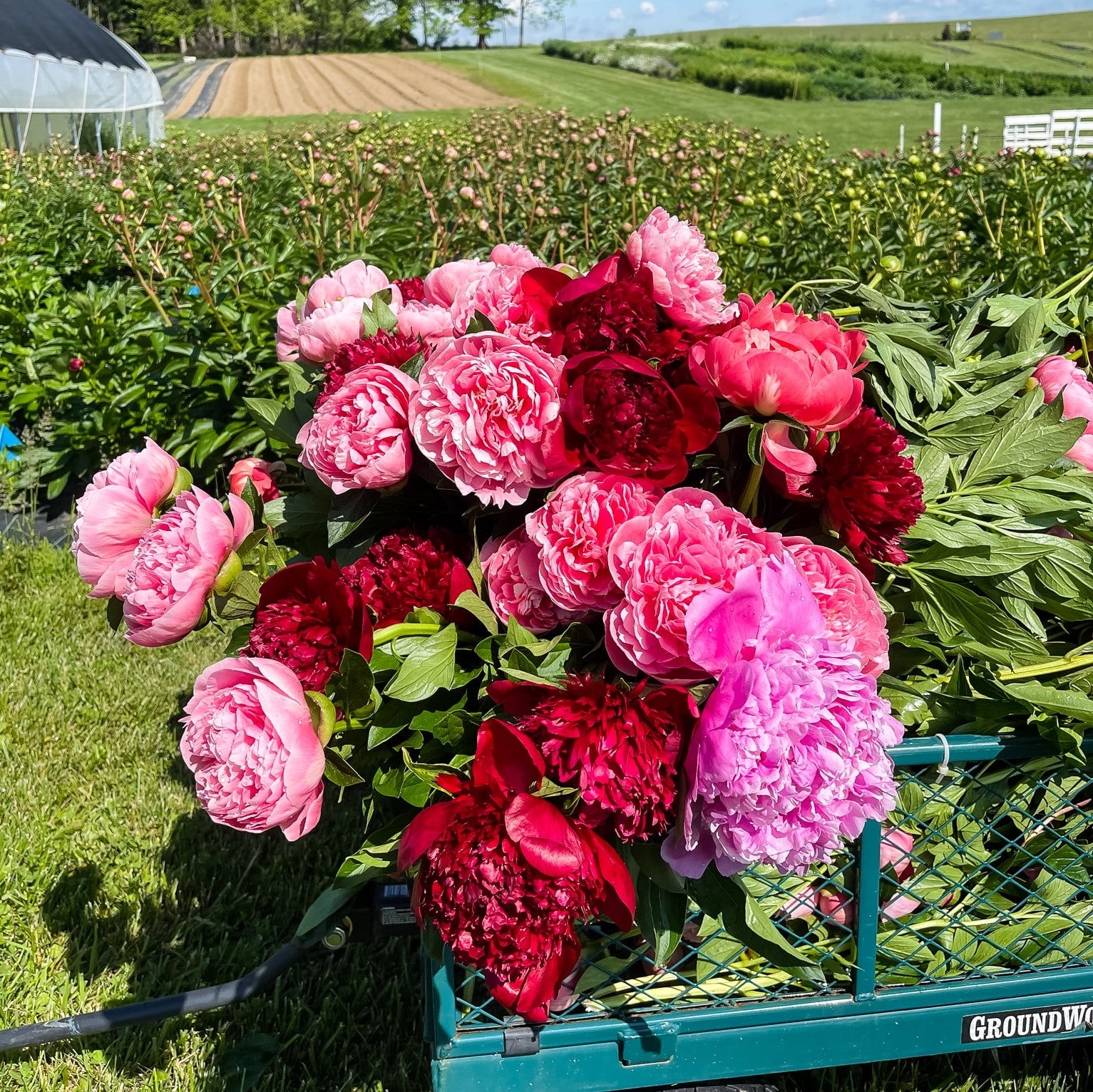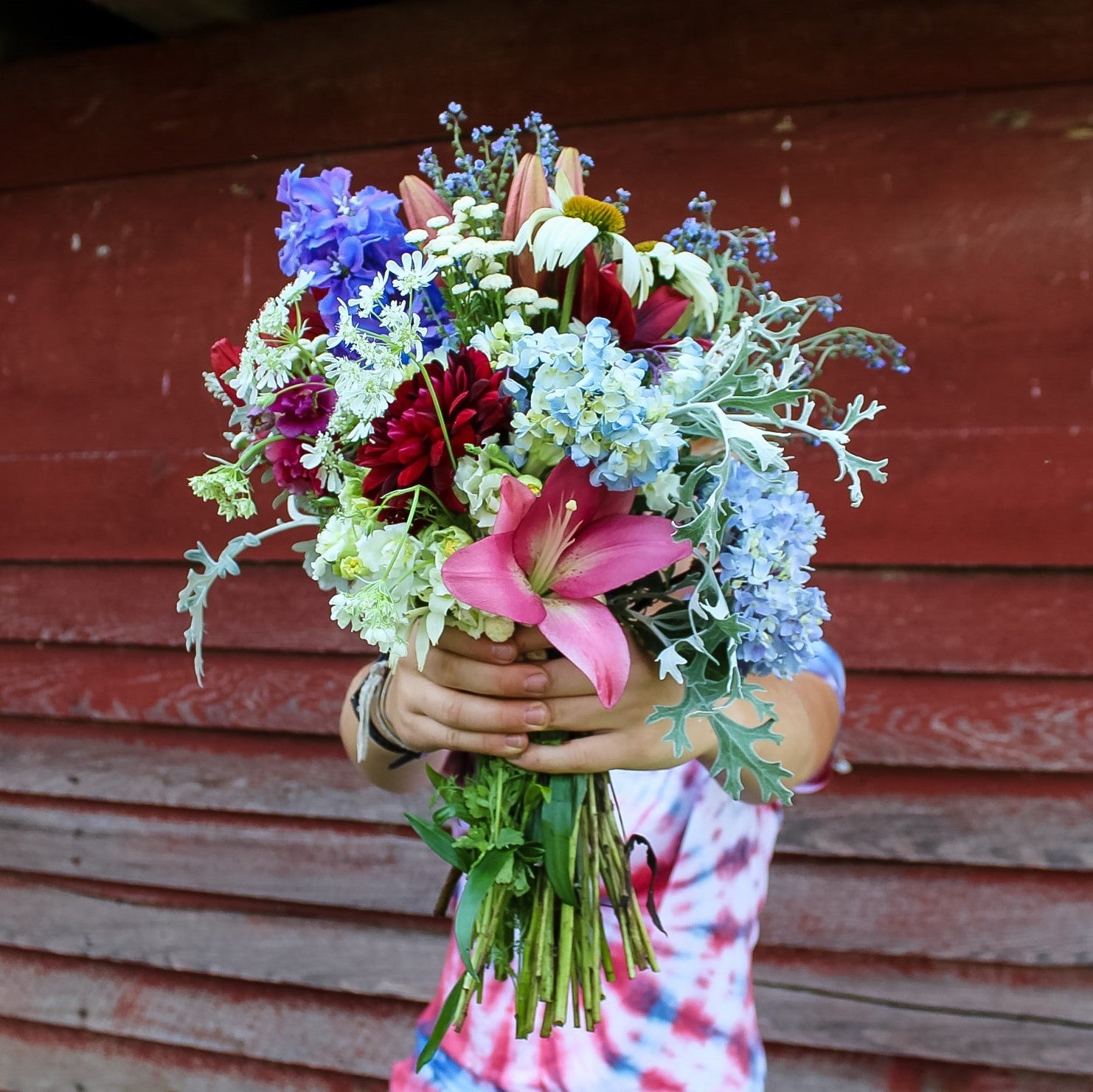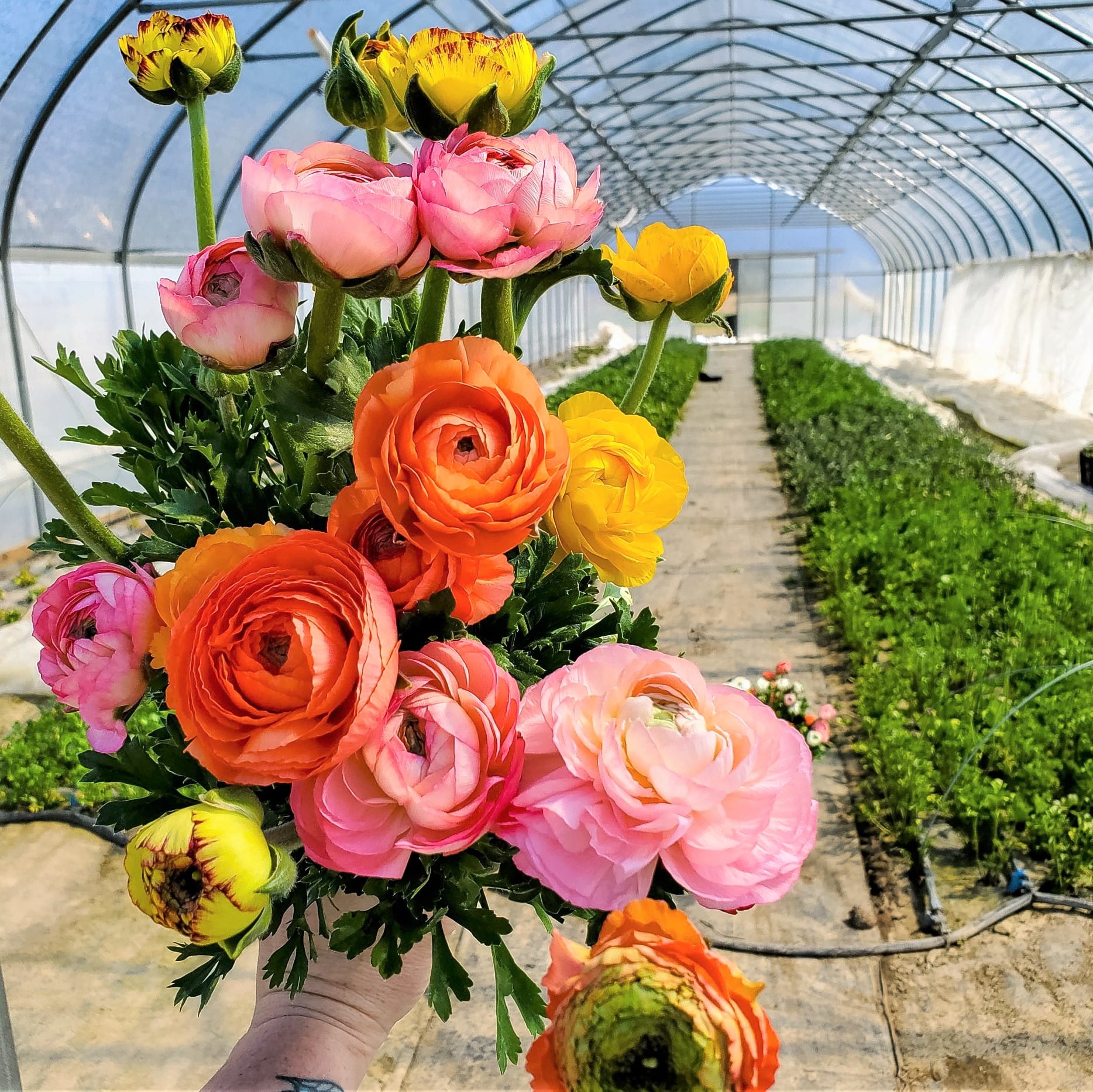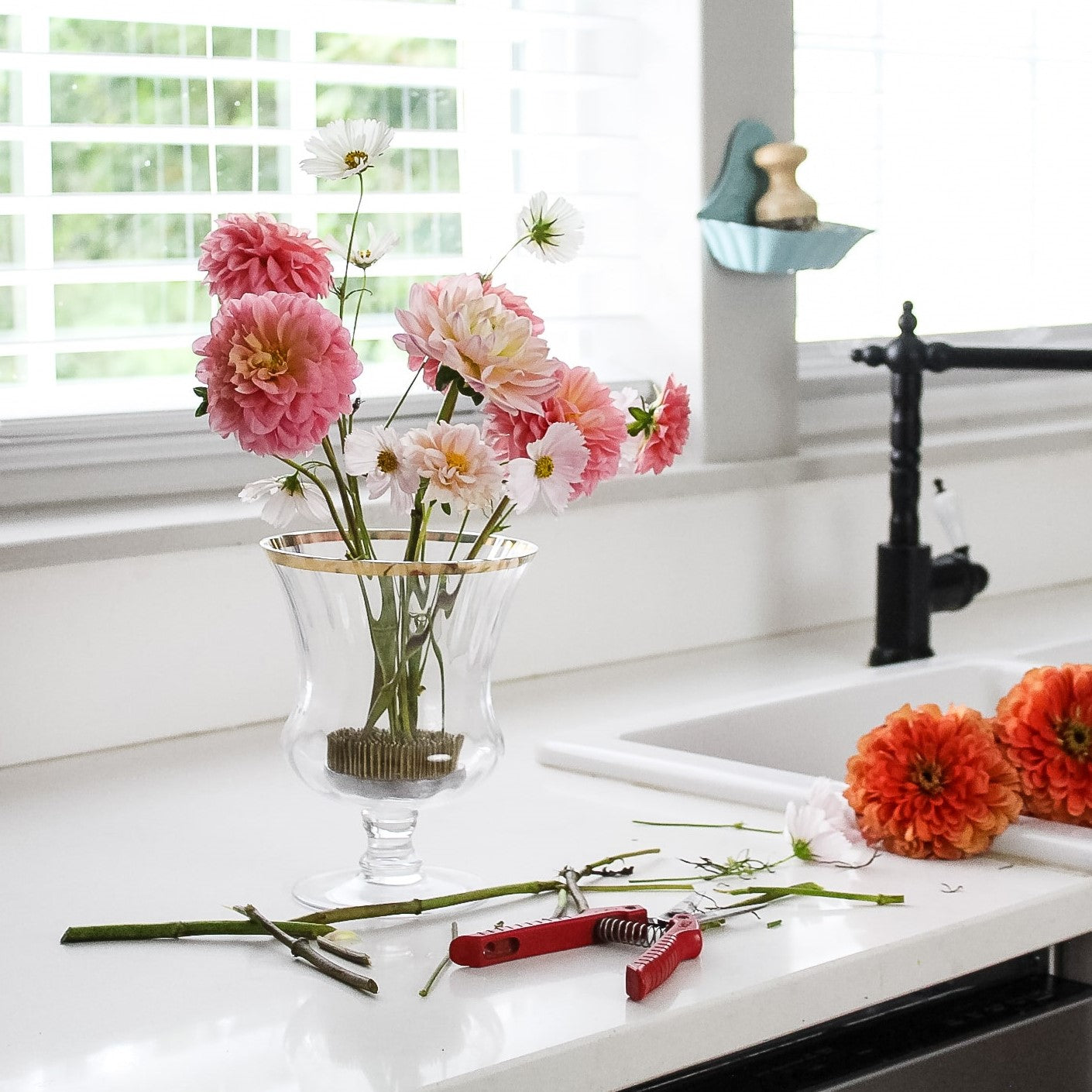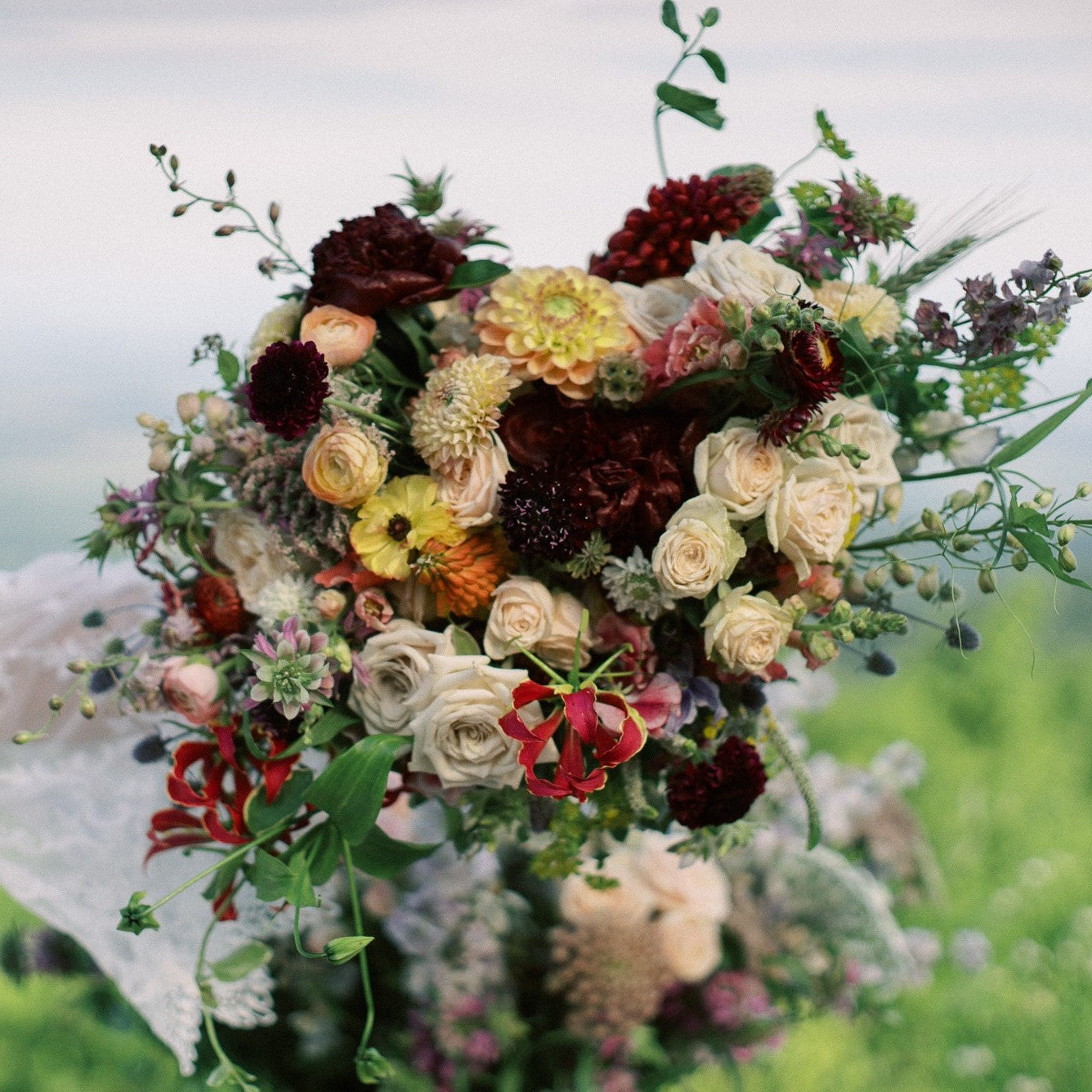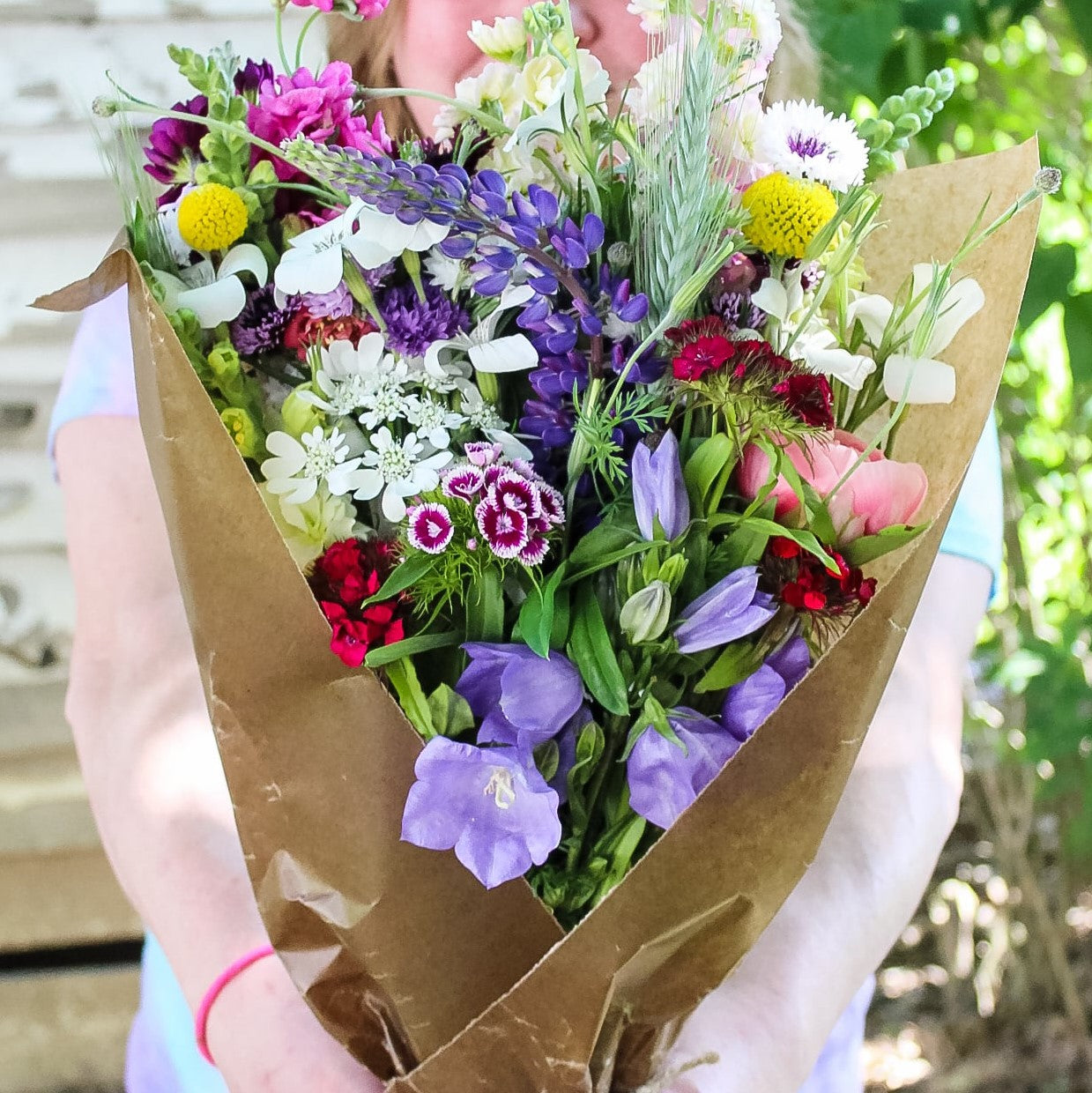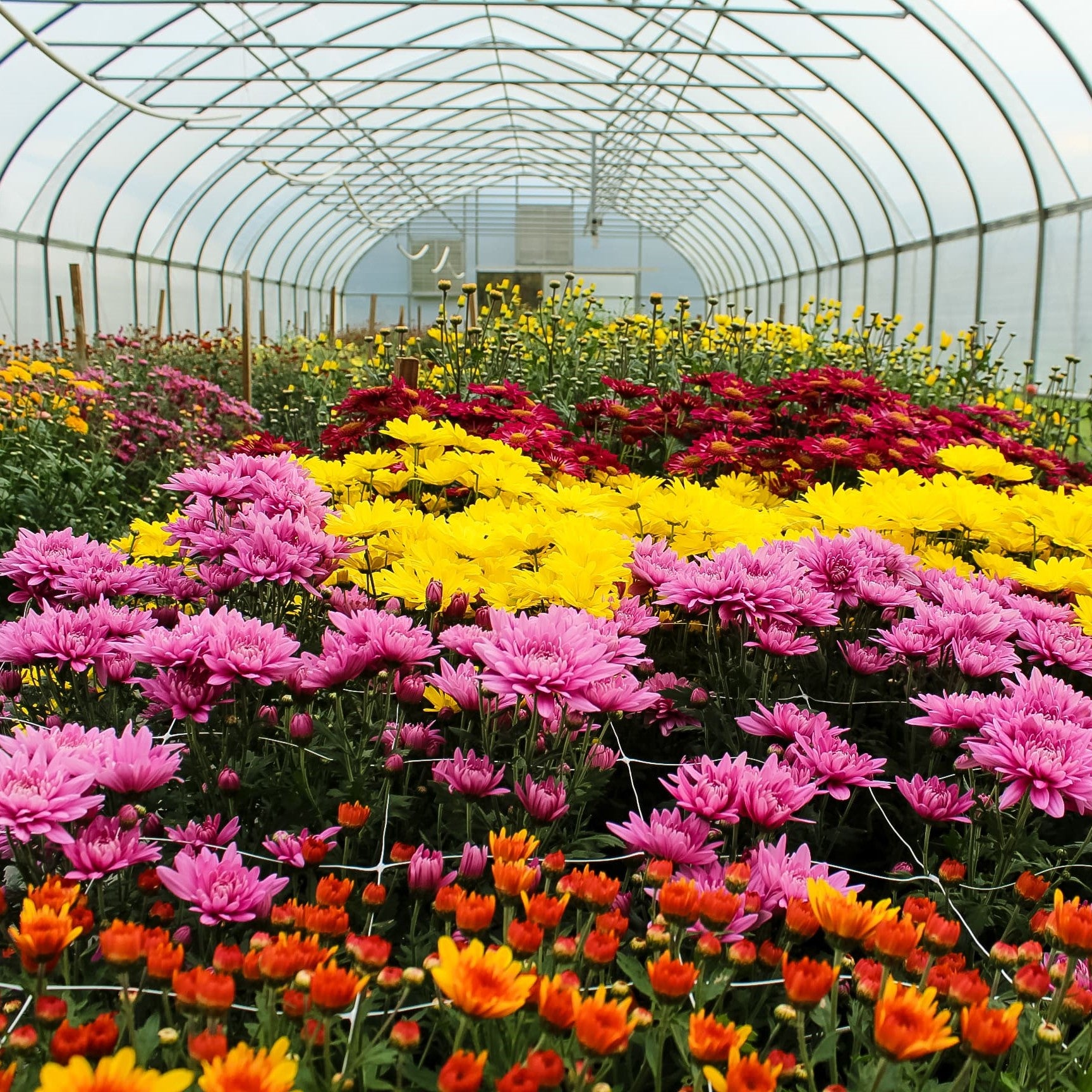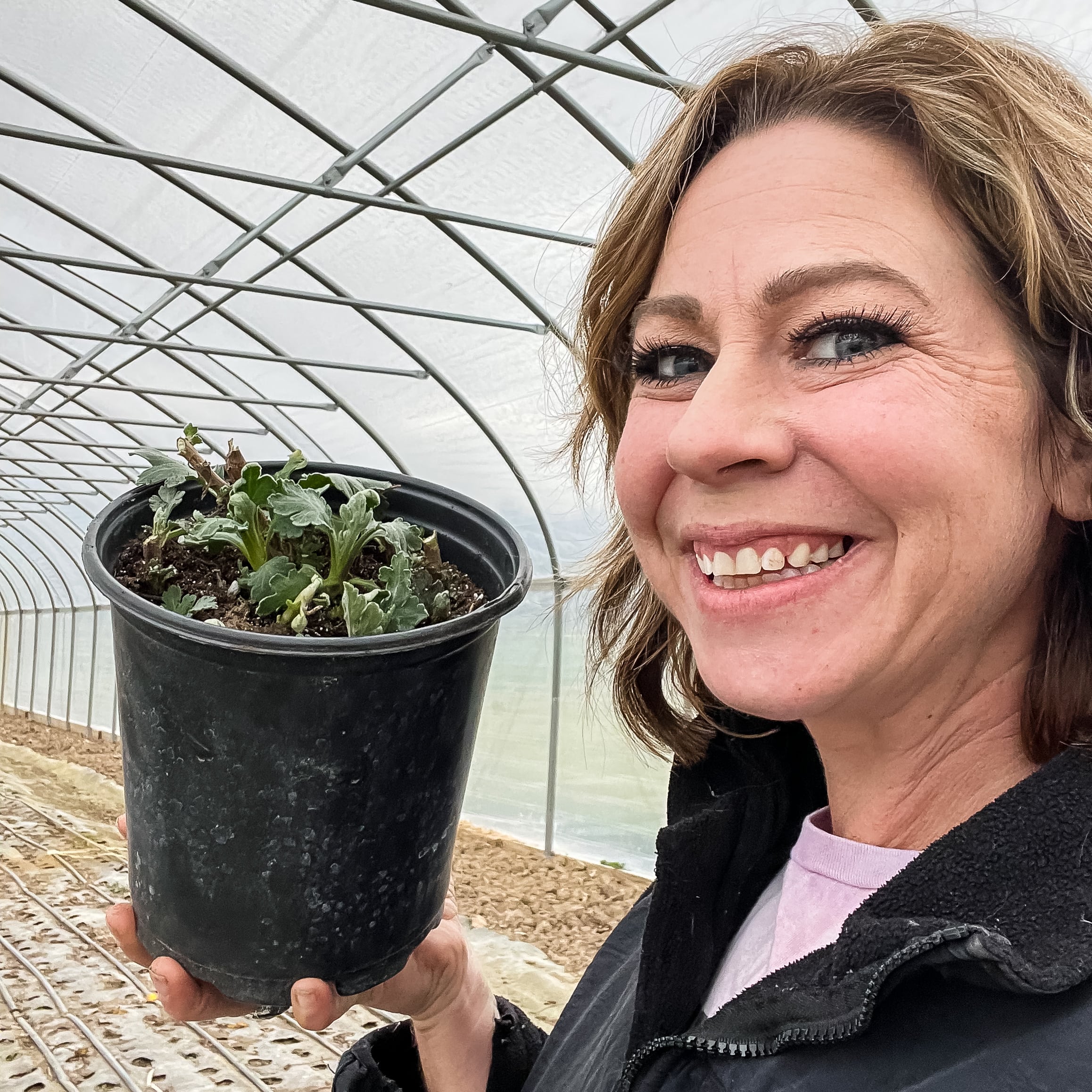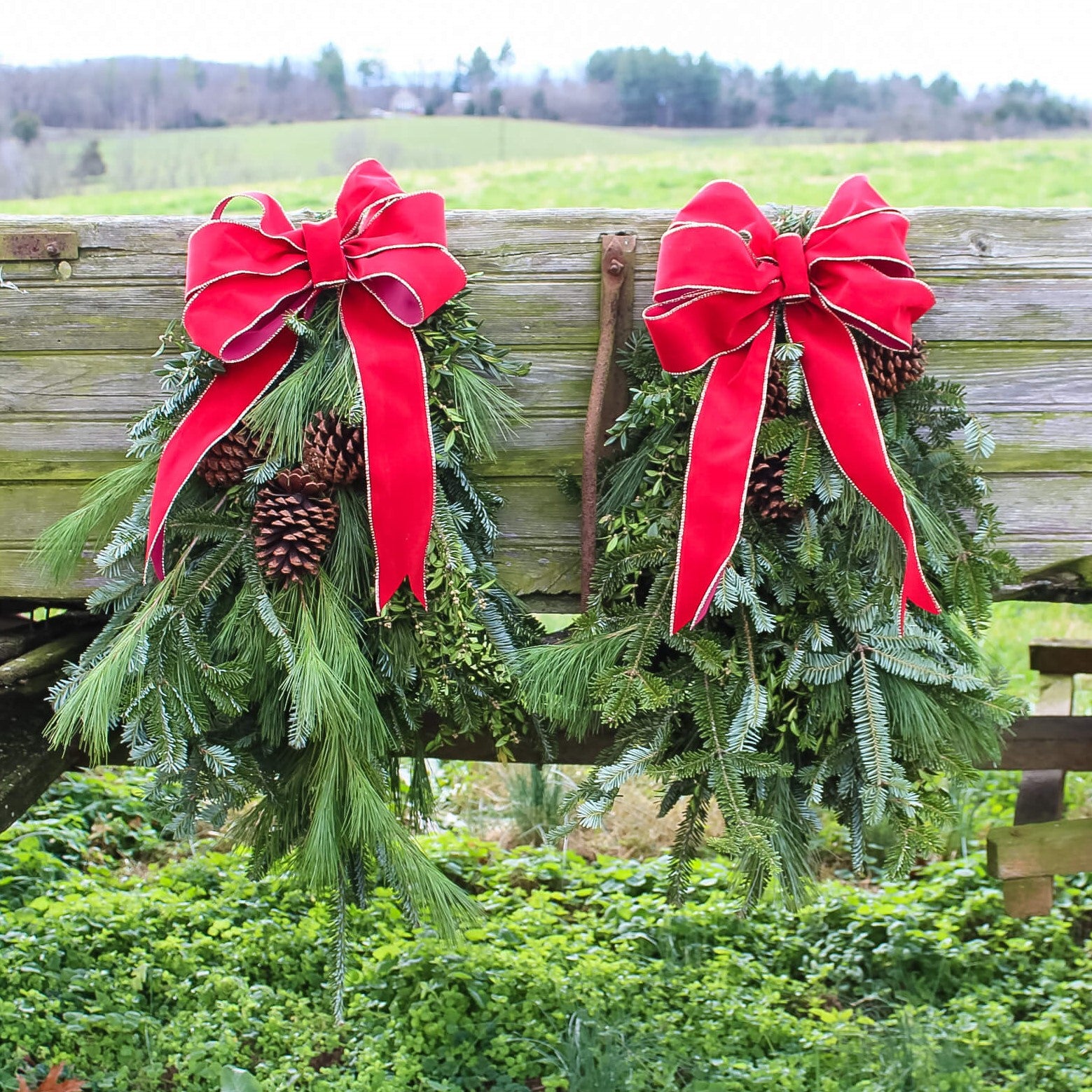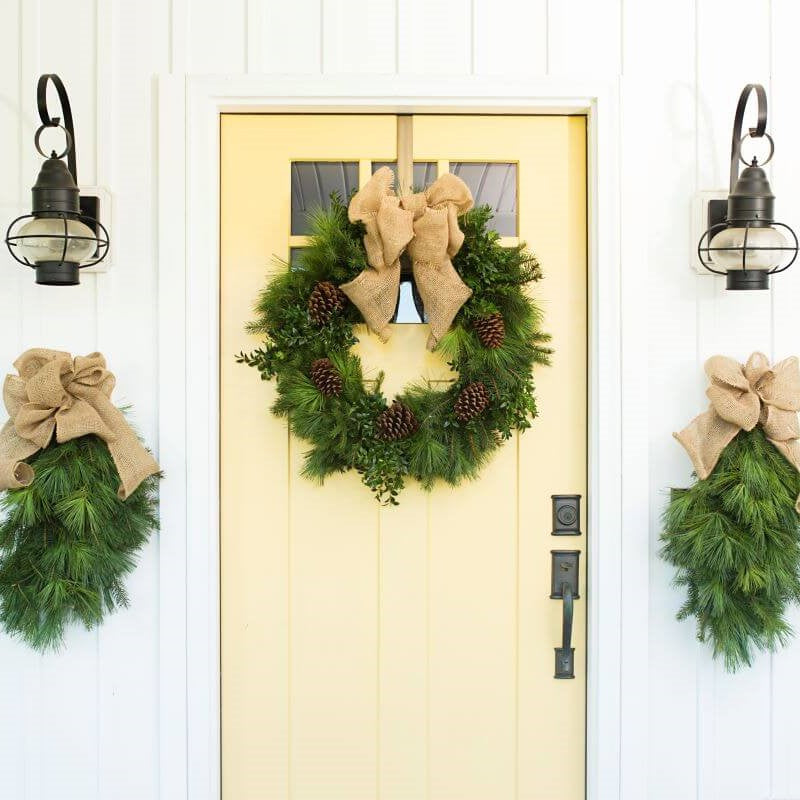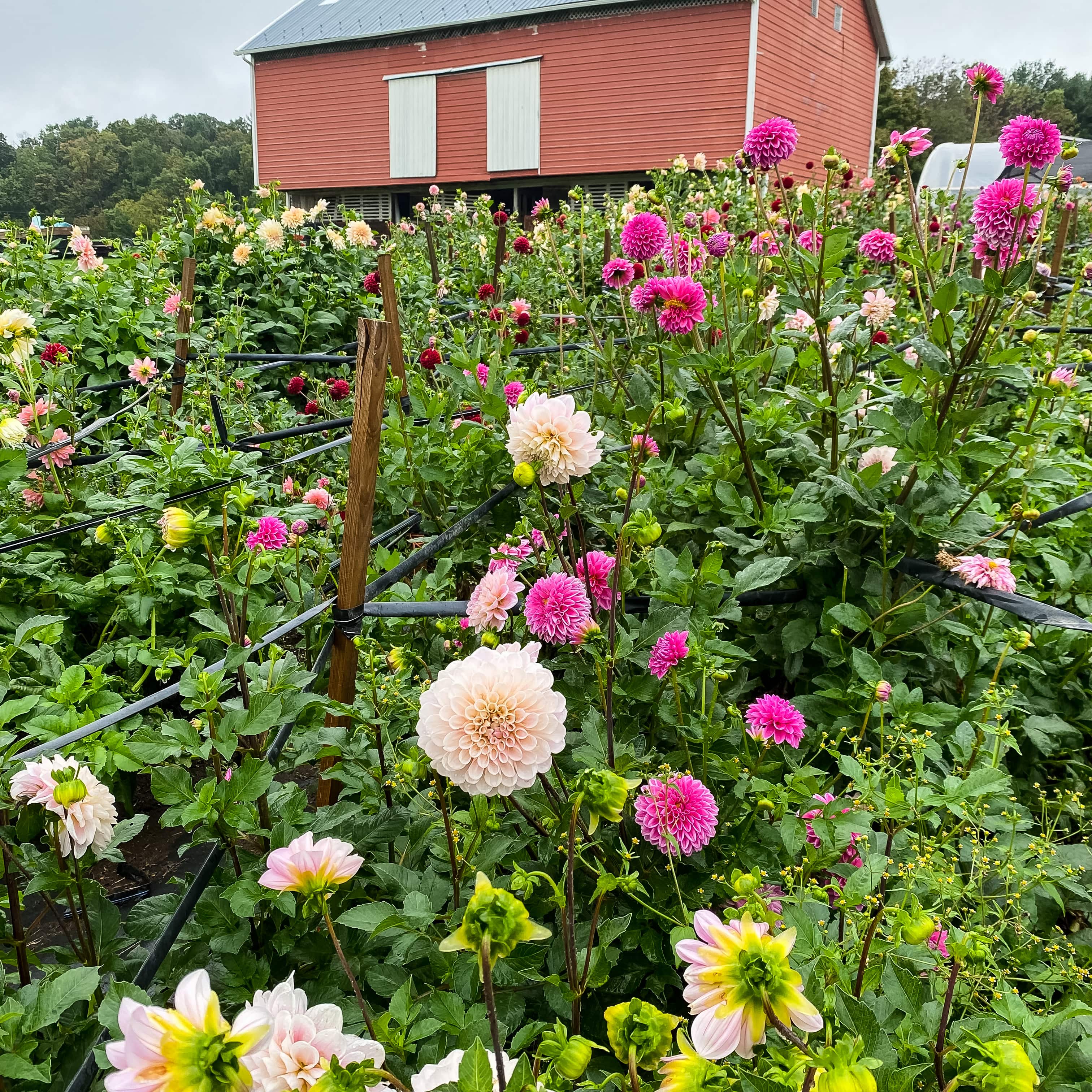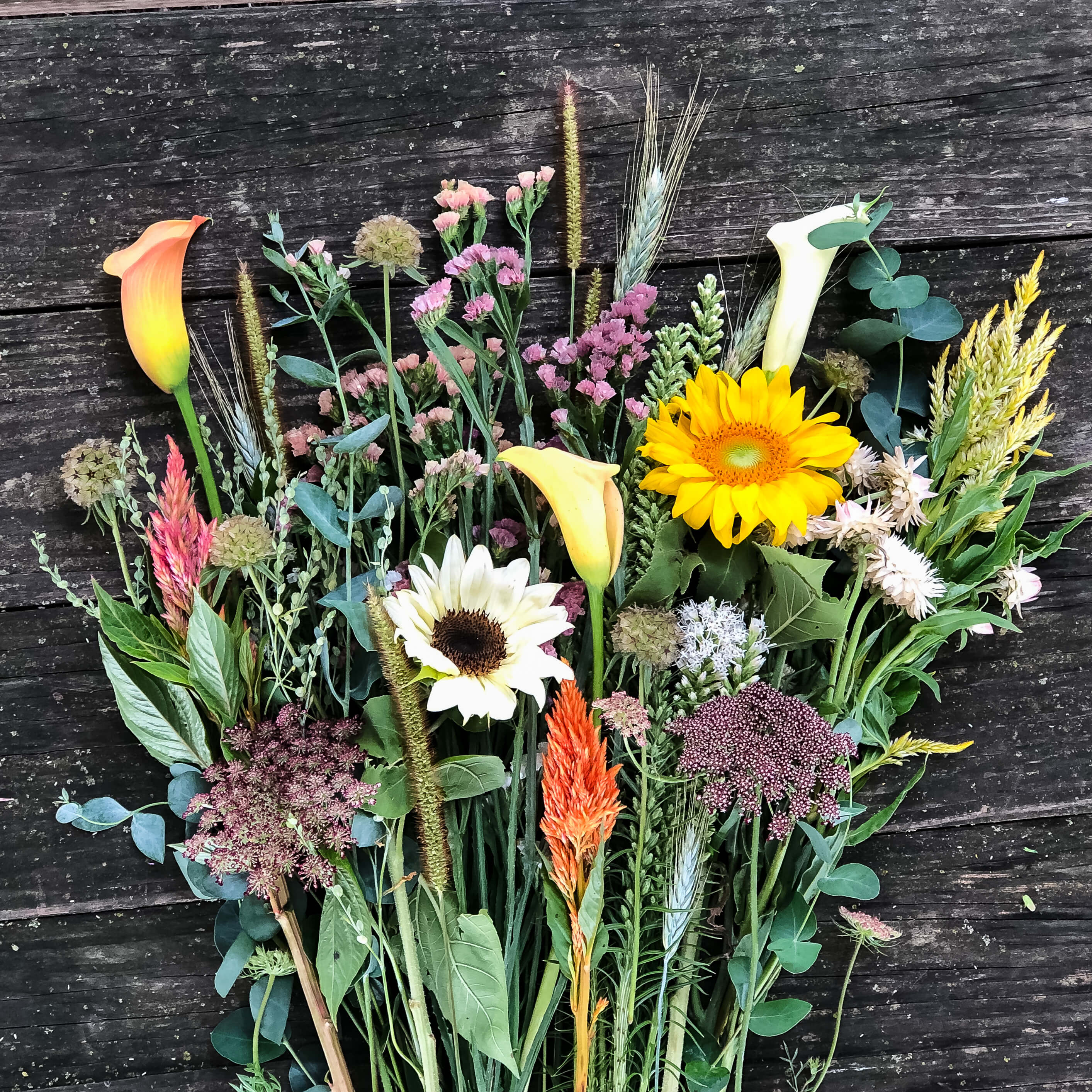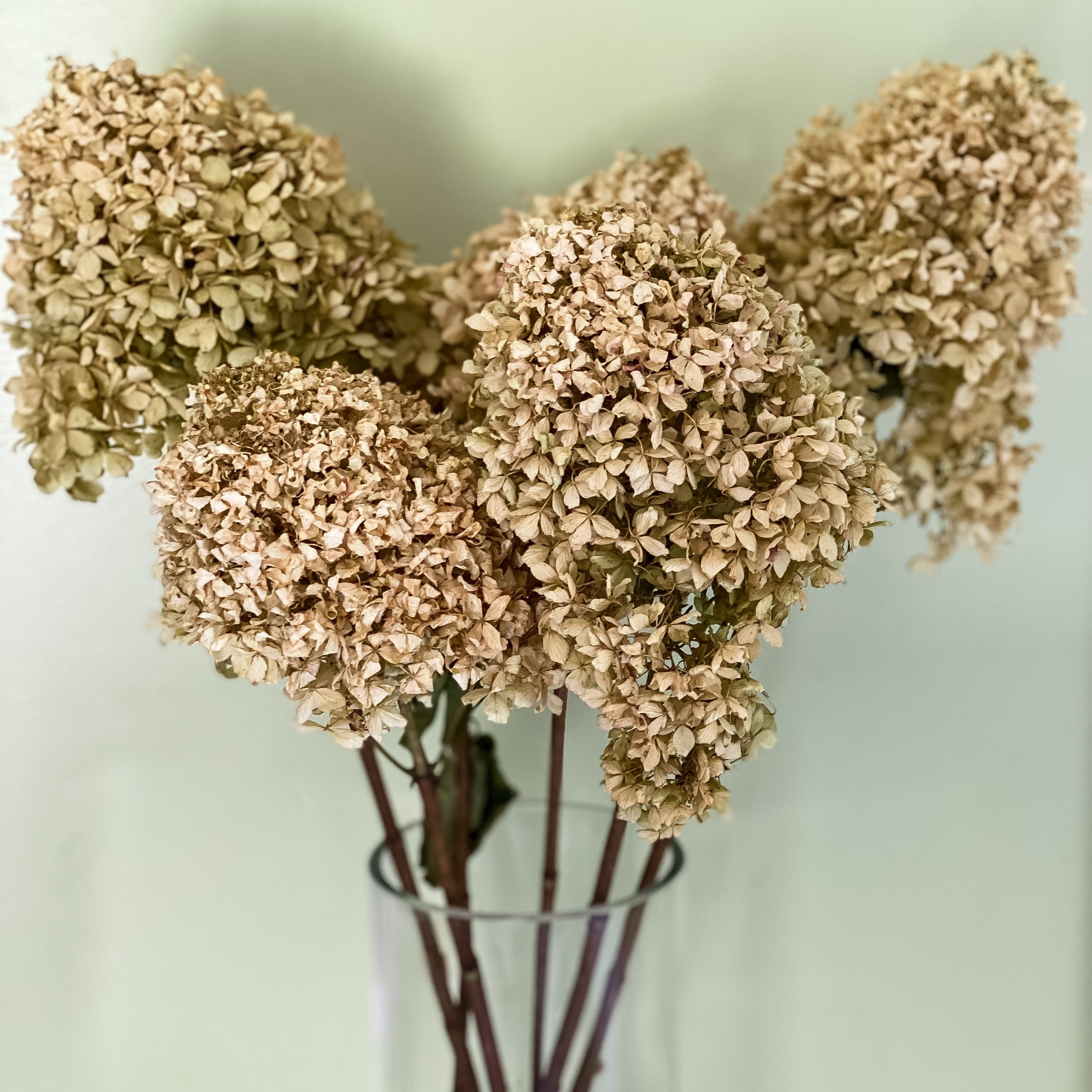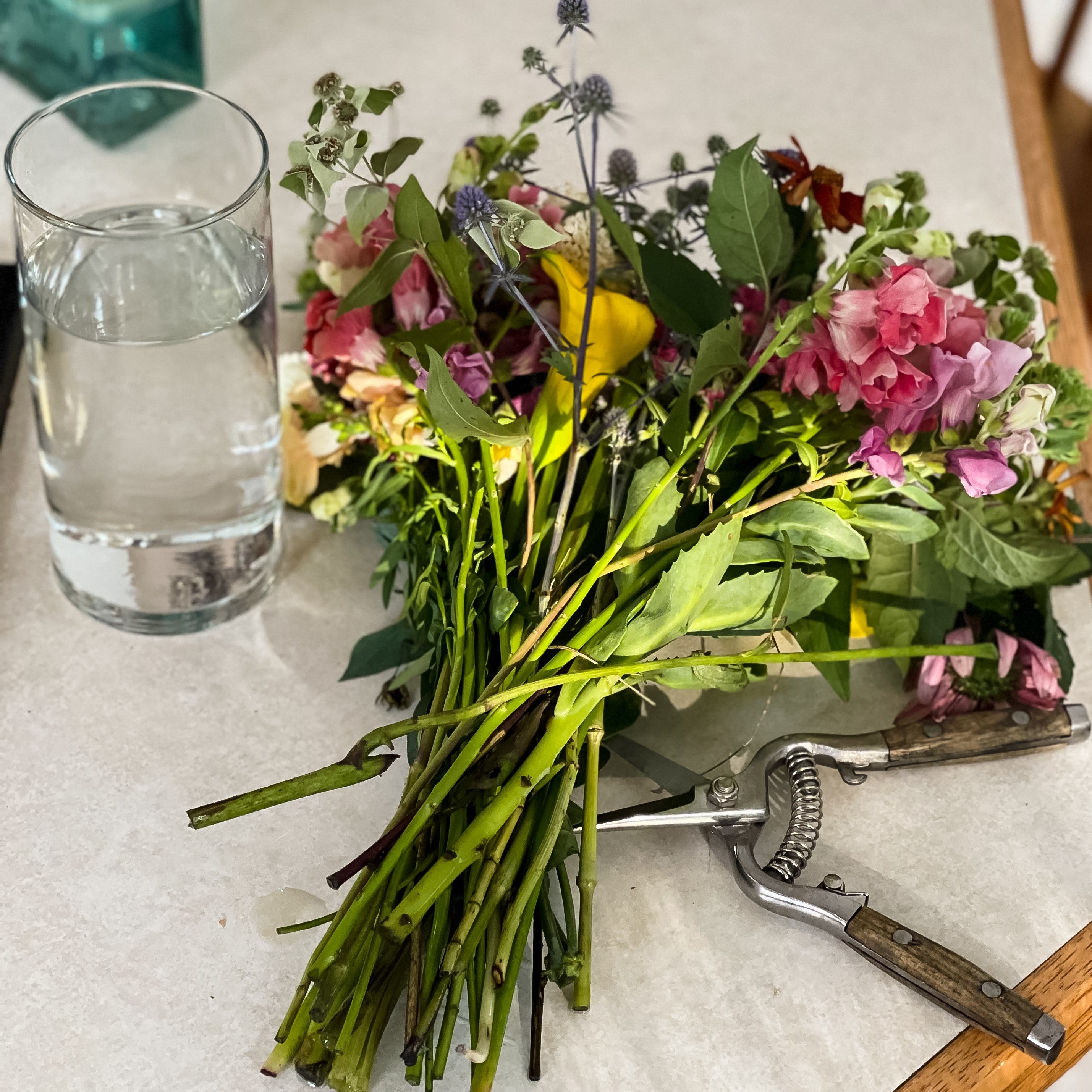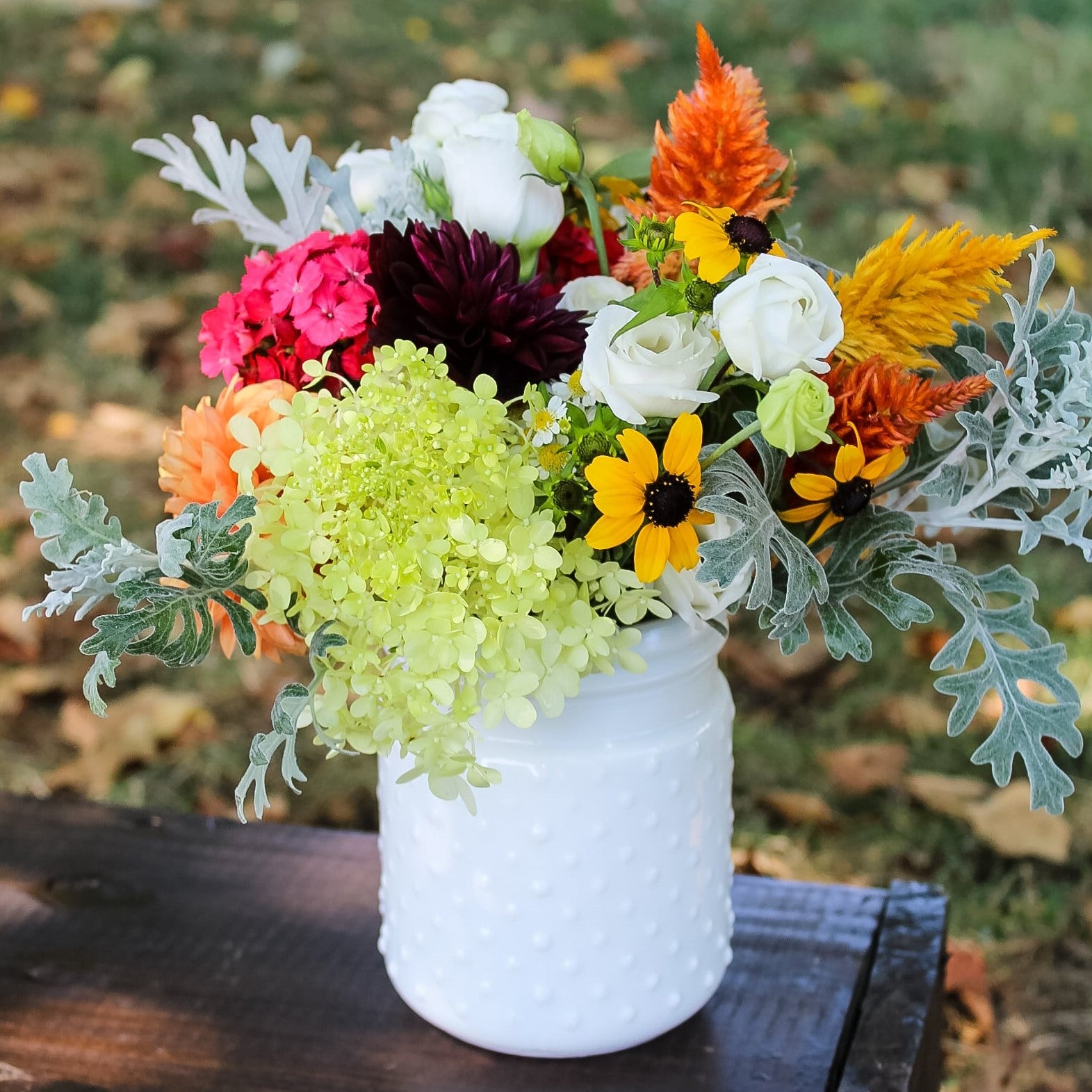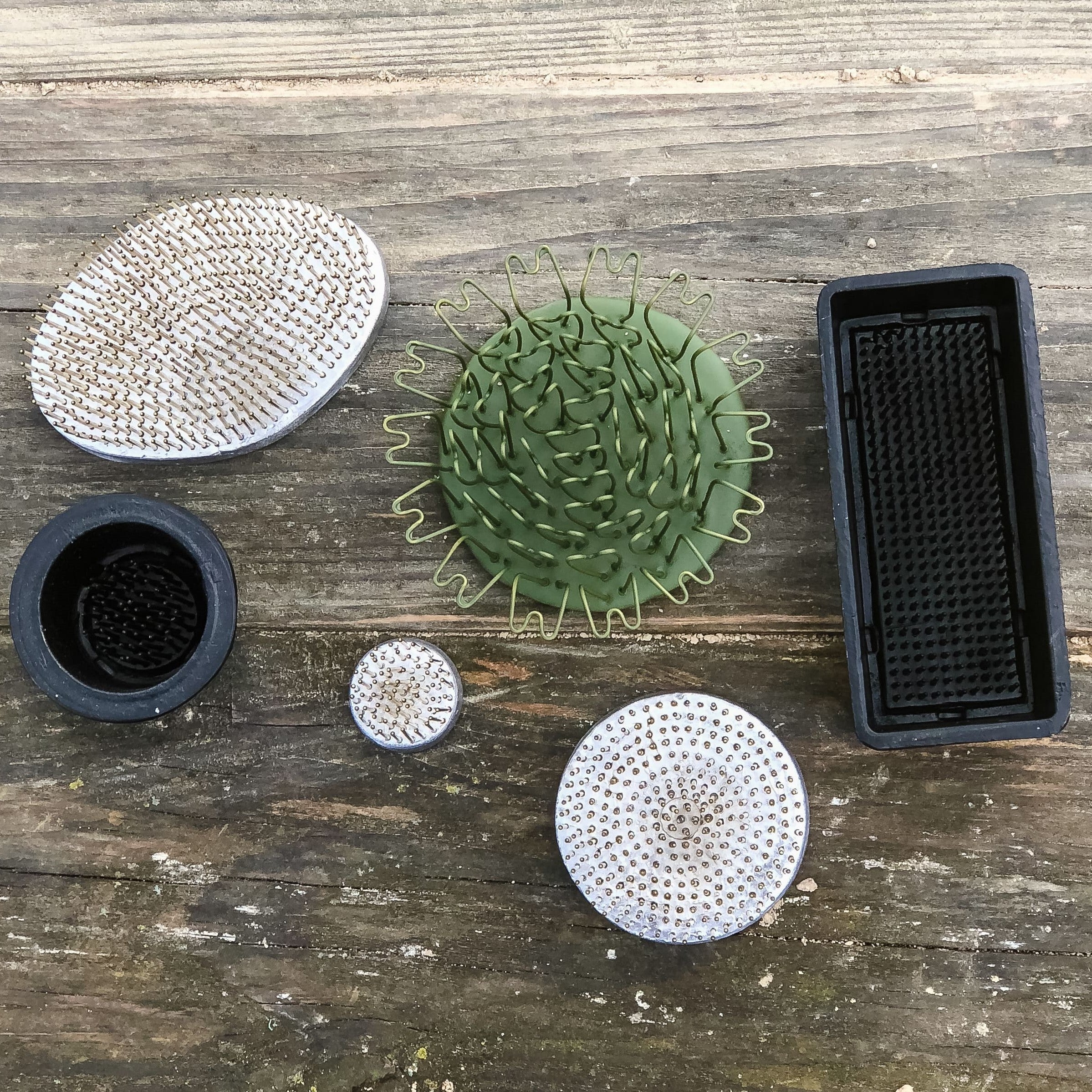Unless you’re a professional designer or floral enthusiast, chances are you’ve never heard of a flower frog. I (Steph) remember when my sister Jessica called me back in 2016 about a business opportunity she wanted me to invest in with her.
Jess: There’s this manufacturing company that I think we should buy.
Me: Wow, we don’t know much about manufacturing, but ok. What are we making?
Jess: Flower frogs.
Me: What is a flower frog?
Mind you, this was before I’d moved back to Virginia to join the ranks at the farm. I was working in digital marketing and knew almost nothing about flowers and floral design. Boy, a lot has changed since then! In January of 2017, Jess and I dove head first into the business of making flower frogs. We purchased all of the manufacturing equipment from the Dorothy Biddle Service, took over the reins as the only US manufacturers of metal flower frogs, and Floral Genius was born.
Even though my life has been consumed with flower frog facts, I’ve gotten used to explaining exactly what a flower frog is to folks outside of the floral industry.
Them: What do you do for a living?
Me: How much time ya got?
So, I decided it was time to write down everything I’ve learned about flower frogs. Buckle up, this is my *jam*.
What is a flower frog?
A flower frog is an object made out of metal, glass, or porcelain that holds flower stems. Some flower frogs are meant to be placed in a vase (like our pin holder and hairpin holders) and some are already built into the vase. My father-in-law is a big antiquer (he goes by the alias “Junkin’ Duncan”) and has helped me build my collection of different flower frogs. I’m a lucky girl.

Flower frogs are also called kenzan, a Japanese term that means “sword mountain”. This name refers to the pin frog flower holder which is used in Ikebana flower arranging. Ikebana is a ancient Japanese art form of flower arranging that has *very* strict rules. In ikebana, you use very few stems, but the placement must be exact, so the pin holder flower frog is critical to getting the perfect shape.
History
Though the use of flower frogs can be traced back to the 16th century, the first patent was issued in 1875. What’s interesting is that none of the patents around flower frogs actually call them that - they call them flower holders or flower arrangers. While no one really knows why they’re called frogs, the best guess is that it’s because they live in water, like a frog.
The hairpin flower holders were invented and patented in 1936 by Ida Sinclair. Ida’s story is pretty awesome, and you can read the full story here.

Most of the flower frogs that we’re used to seeing in the world were popular during the early twentieth century, but fizzled out when floral foam was brought to market in 1954 by inventor, V.L. Smithers.
The Resurgence
Over the past 15 years, flower frogs have had a resurgence in popularity due to the foam-free movement in the floral design industry. There are many reasons why floral designers prefer flower frogs over floral foam, but the main reason is sustainability. Floral foam does not break down in the environment and with millions of flower arrangements made each year, that’s a lot of extra trash from folks who need a healthy earth to produce flowers!
In the blog post “Going Foam-Free with Flower Frogs”, Jess talks more about why many people prefer flower frogs over floral foam. While it may seem easier to design in floral foam, the benefits of going foam-free might surprise you!

How to Build a Flower Frog Collection
There are a few different ways to build a flower frog collection, and how you get your frogs depends on how you’ll use them. If you’re a floral enthusiast looking for unique types of kenzans, your best resource will be antique stores. This is where you’ll find a lot of vintage pin holders and hairpin holders, as well as glass and ceramic flower holders. You can also check with your local pottery shop, as many ceramic artists create stunning ikebana vases every day!
Metal pin holders are the most popular for professional floral designers, but relying on antique stores to build consistent inventory is nearly impossible. Yes, metal flower frogs are available at the craft store, or on Amazon, but in order to get the most life out of the investment, quality is key! The truth is, a lot of flower frogs in the consumer market are made with cheaper materials, meaning they’ll almost certainly rust after a few uses.
Quality has always been important to our family. As the queen of using something until the wheels fell off, our grandmother coveted anything that lasted the test of time. There were very few “new” things in our grandmother’s house because she always saved, invested in quality, and took care of the things she had. So, when we were looking at the pros and cons of buying the flower frog business, the quality of the flower frogs we would be making was a high priority. We knew making frogs would be a huge undertaking, and the last thing we wanted was to go through all of the struggle just to make a bunch of junk.
Today, Floral Genius makes three styles of high-quality flower frogs:
The Classic Pin Holder
Likely one of the most widely used flower frogs on the market, these classic pin frogs come in a variety of shapes and sizes and can be adhered to any vase that holds water with floral putty. Stems are inserted onto the sharp nails and given this frog’s low profile, creates an organic look where the flowers appear to be growing from the bottom of the vase!

The Pin Cup
This style combines the flower frog and a water-tight vase! Each pin cup is tested for 24 hours to ensure it holds water and is perfect for at-home and professional use! I have one on my window sill to display my favorite or short-stemmed blooms, and Jess uses them to design flowers in containers that don’t naturally hold water (think baskets!)

The Hairpin Holder
I have to warn you, the hairpin flower holder is highly addictive because it’s so easy to use! Made with looped pins, the hairpin’s design mimics the thatched support you’d find with chicken wire and is great for silk or dried flower because it won’t damage the stems! If you’ve never used a hair pin holder, read my blog post about designing with a hairpin holder to find out how I create flower arrangements with ease!

The Floral Genius difference.
As I mentioned, the main differentiating factor between the Floral Genius frogs and the ones that are found in big box stores is the quality. Each frog flower holder is made with 100% rust-free materials, meaning they’ll last for decades even after being submerged in water for most of their lives. Another great thing about these flower holders is that the pins are much longer than their mass-produced counterparts -AND- have more pins. With extra-long pins set closely together, these flower arrangement frogs have exceptional hold to keep arrangements in place and enable more exact stem placement.
And, if the technical quality wasn’t enough, each kenzan is made by an excellent human. They’re handcrafted and inspected by our frog makers on each step of the process. We’re really proud of our flower frogs and the fact that we’ve been able to keep the manufacturing right here on the flower farm.

Do you have a flower frog collection? Which one is your favorite, and why?
